Victorian hallways serve as the grand introduction to a home, setting a tone of opulence, history, and intricate detail right from the entrance. This era, known for its love of ornamentation and rich materials, transformed the simple corridor into a statement of wealth and taste. A well-designed Victorian hallway is not merely a transitional space but a destination in itself, featuring deep colors, elaborate patterns, and stately furniture. By embracing key architectural features and decorative elements, you can recreate this timeless elegance, crafting an entryway that feels both historically authentic and warmly inviting for all who enter.
1. Victorian Hallway with Geometric Tiled Flooring
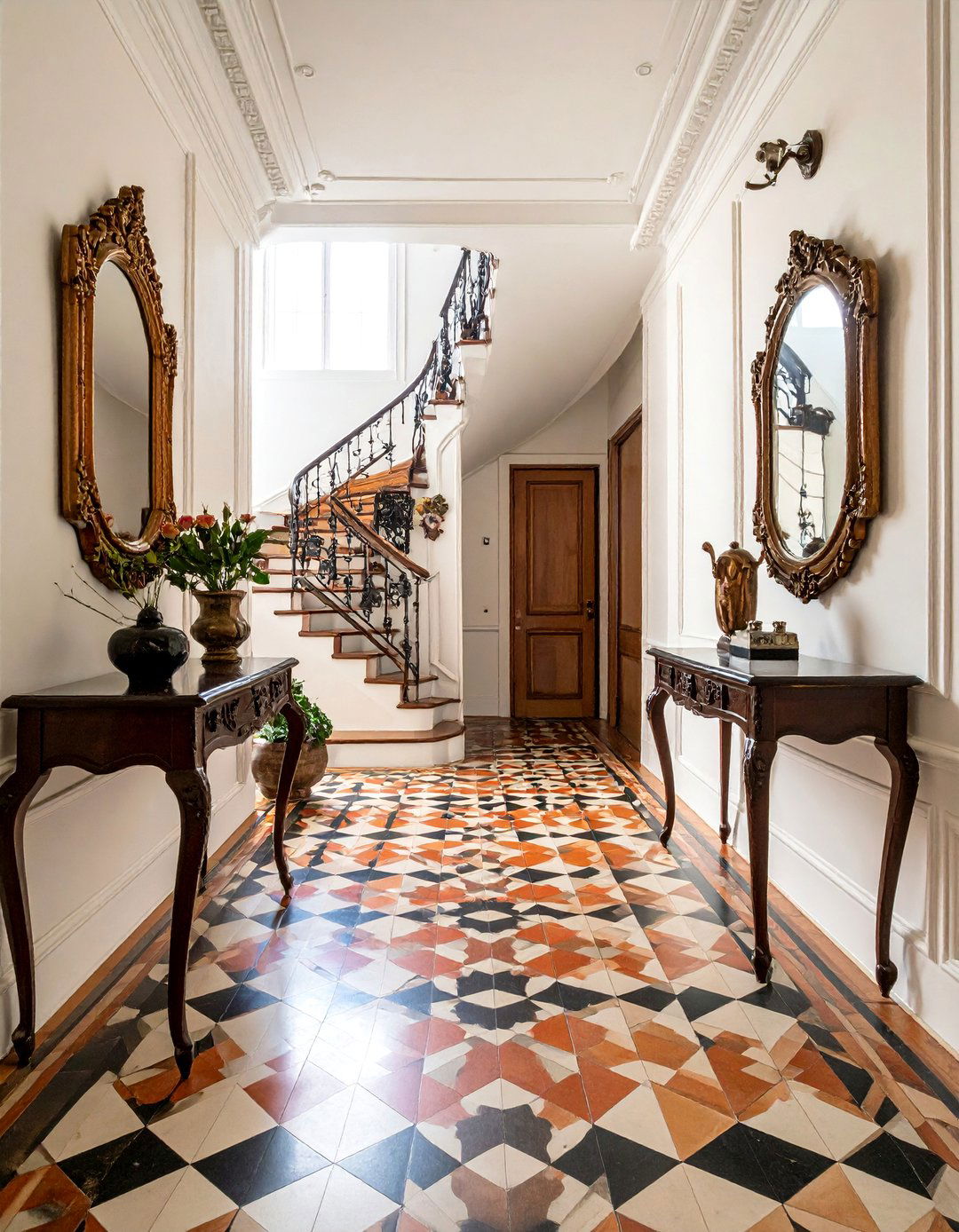
A quintessential feature of the era, geometric encaustic tiles instantly establish an authentic Victorian foundation. These intricate patterns, often in rich earth tones like terracotta, black, cream, and blue, create a durable and visually stunning pathway into the home. The complexity of the design, from simple checkerboards to elaborate, interlocking motifs, can be scaled to suit the size of your hallway. This type of flooring is not just a decorative choice; it’s a nod to the industrial advancements of the 19th century and a practical solution for a high-traffic area, seamlessly blending historical accuracy with enduring style and function.
2. Victorian Hallway Featuring a Grand Staircase
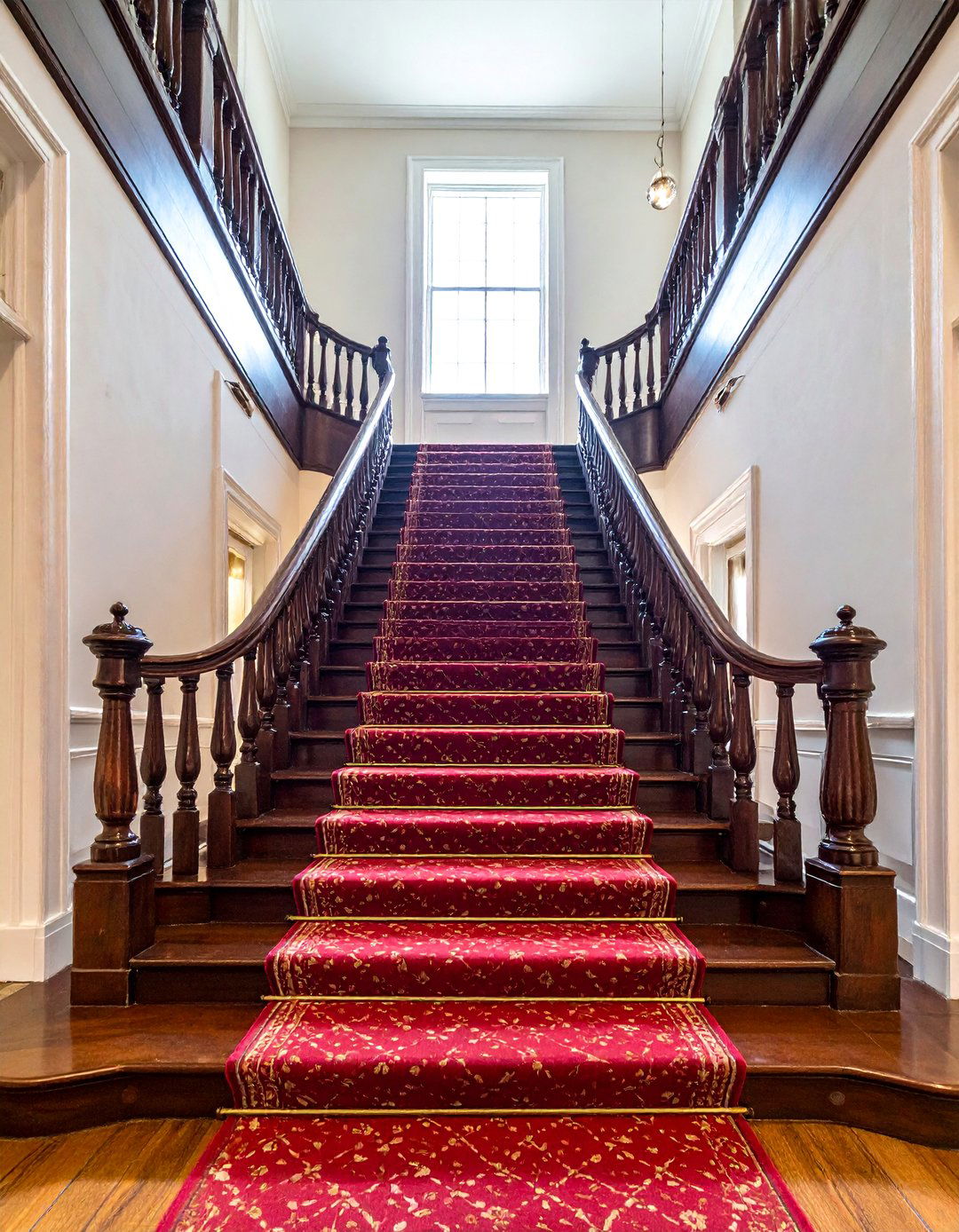
The staircase is often the majestic centerpiece of a Victorian hallway, designed to impress visitors immediately. Characterized by dark, polished wood such as mahogany or oak, these staircases boast intricate details. Look for turned spindles, a substantial newel post often topped with a decorative finial, and a gracefully curved handrail or balustrade. To enhance its grandeur, consider a richly patterned stair runner, typically in deep reds, greens, or golds, secured with polished brass stair rods. This not only adds warmth and reduces noise but also draws the eye upward, accentuating the height and architectural splendor of the space.
3. Victorian Hallway with Anaglypta or Lincrusta Wallpapers
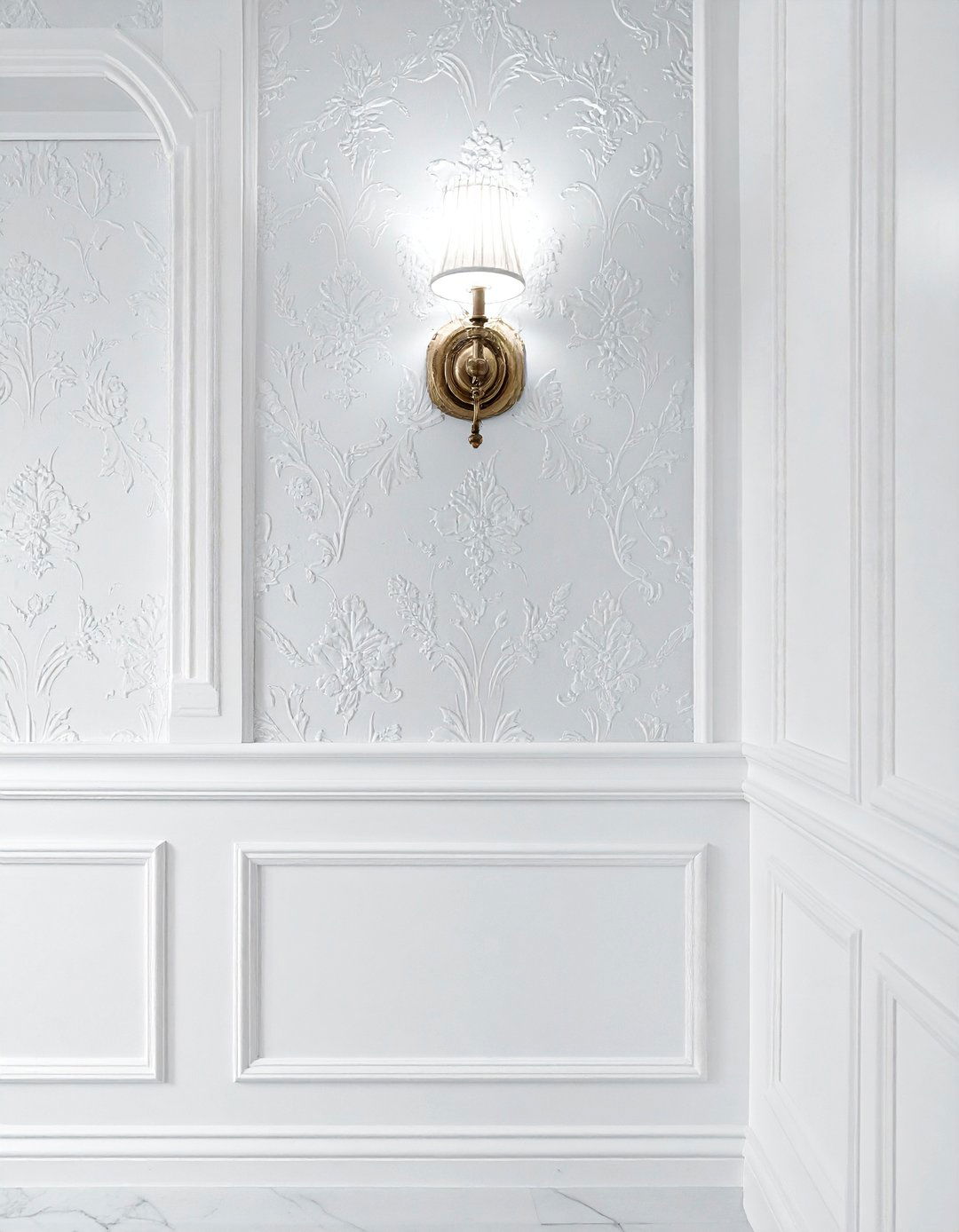
For an authentic touch of texture and depth, Anaglypta or Lincrusta wallpapers are indispensable in a Victorian hallway. These heavily embossed wall coverings were popular for their ability to mimic ornate plasterwork at a lower cost. Applied below a dado rail, they add a layer of robust, decorative detail that can be painted to match your color scheme. The intricate patterns, ranging from delicate florals to bold geometrics, catch the light beautifully, creating subtle shadows and highlights. This treatment adds a tactile richness to the walls, transforming a plain surface into a feature of historical significance and visual interest.
4. Victorian Hallway Illuminated by a Crystal Chandelier
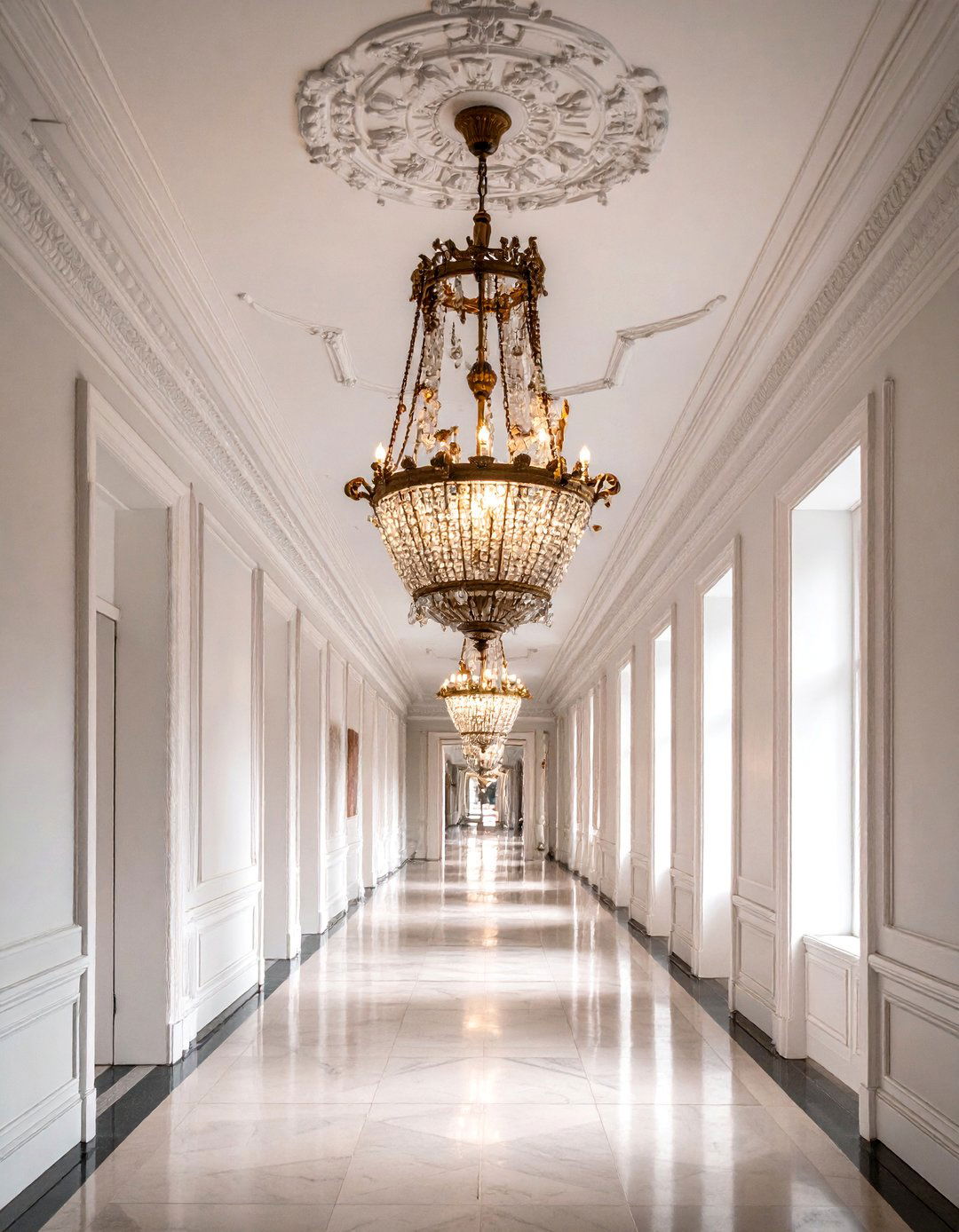
Proper lighting is crucial for balancing the often dark and narrow proportions of a Victorian hallway. A crystal chandelier serves as a spectacular focal point, scattering light and adding a touch of glamour and sophistication. Hung from an ornate ceiling rose, the chandelier becomes a glittering jewel that elevates the entire space. For authenticity, choose fixtures made of brass or bronze with intricate detailing and multiple arms. The refracted light from the crystals not only brightens the hallway but also enhances the richness of the dark wood and deep wall colors, creating a welcoming yet dramatic first impression for guests.
5. Victorian Hallway with an Ornate Gilt-Framed Mirror
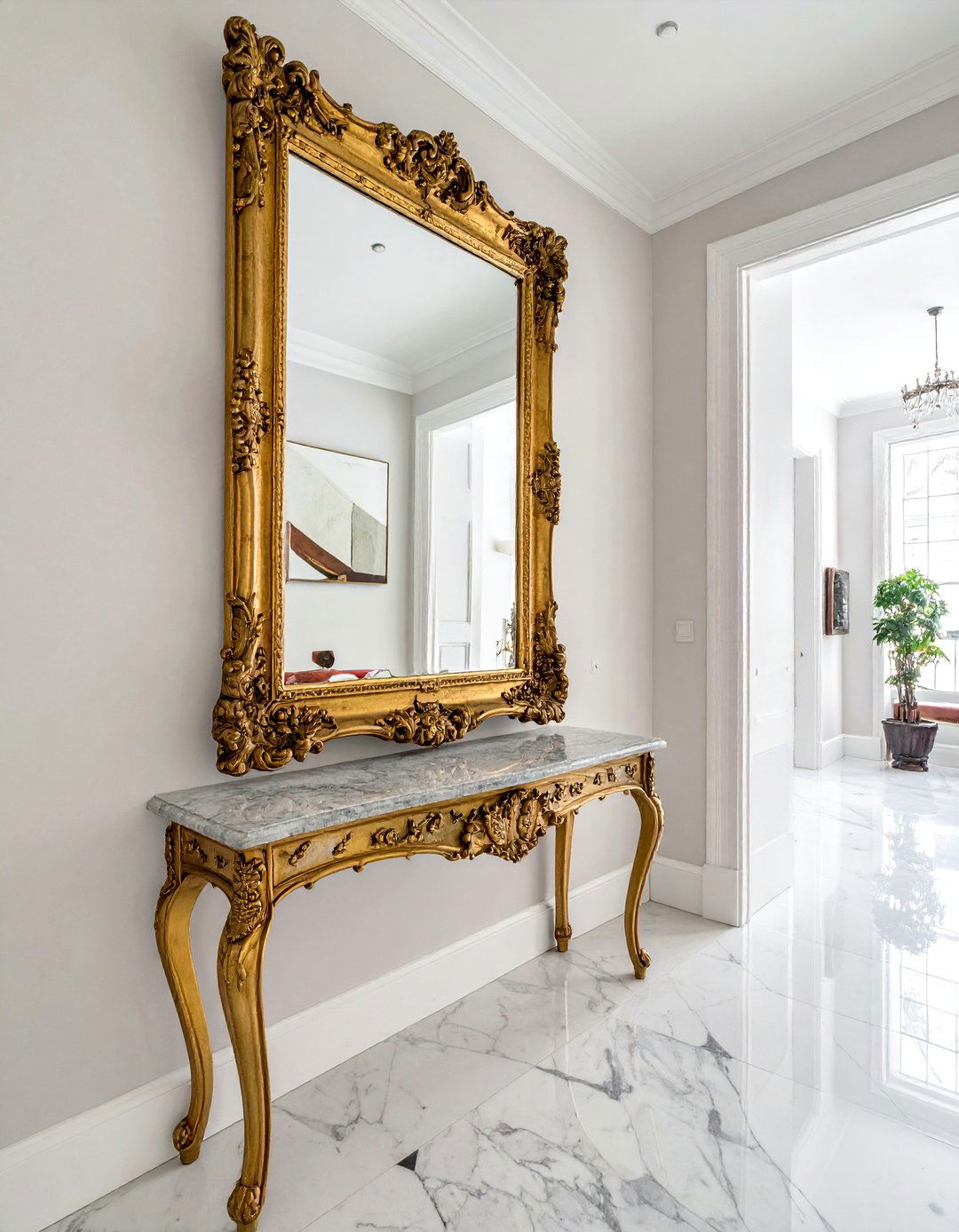
An oversized, ornate mirror is a classic Victorian hallway staple that combines function with opulence. Placing a large, gilt-framed mirror above a console table or on a long, empty wall creates an illusion of space and light, making narrow corridors feel more open. The frame itself is a piece of art, often featuring elaborate carvings of scrolls, leaves, or floral motifs finished in gold leaf. This reflective surface not only brightens dark corners by bouncing light from chandeliers and windows but also adds a layer of decadent elegance, perfectly capturing the Victorian appreciation for lavish and detailed decoration.
6. Victorian Hallway with a Stained Glass Front Door
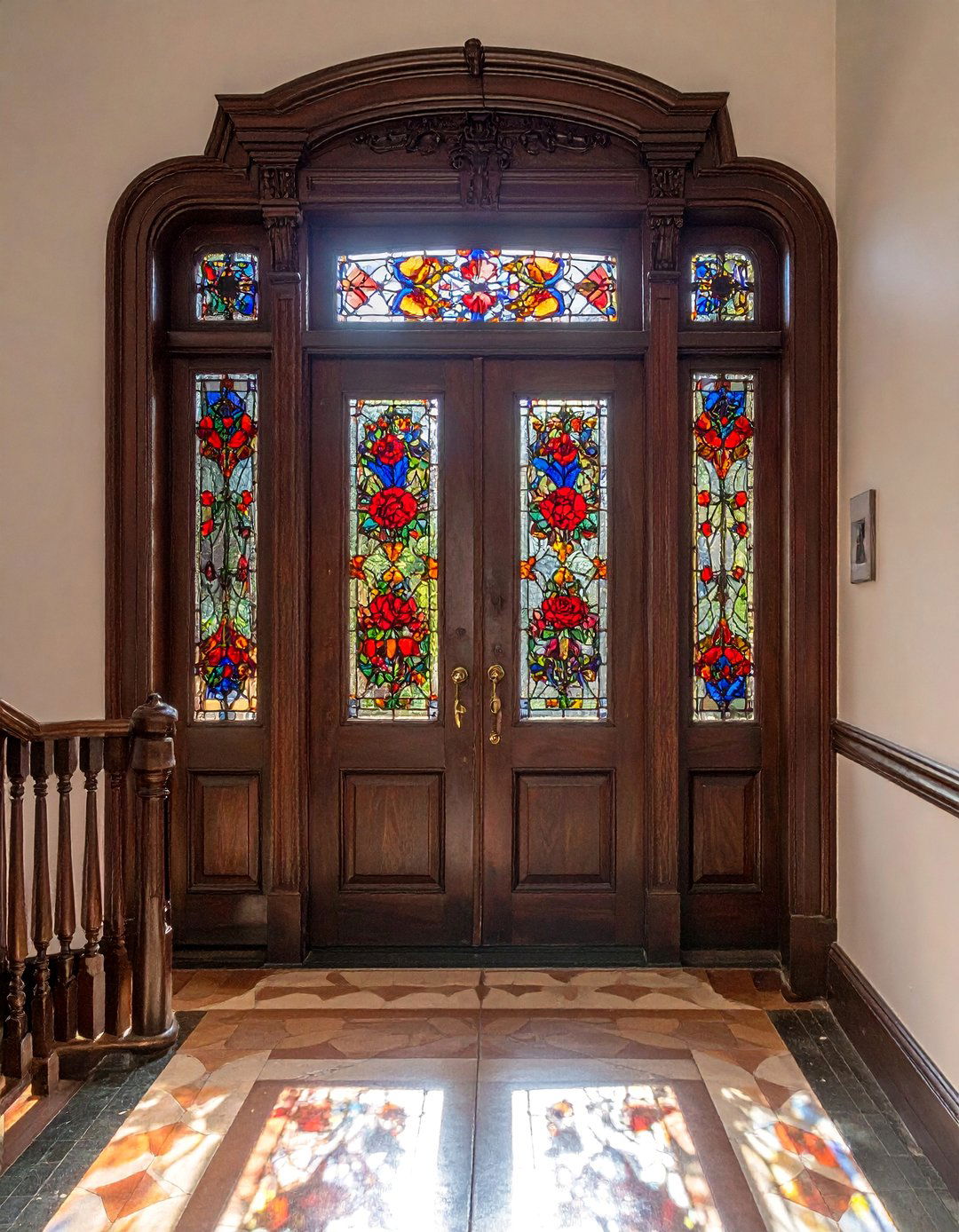
The front door is the first glimpse into the home's character, and in Victorian design, stained glass panels are a defining feature. These intricate designs, often incorporated into the door itself or the surrounding transom and side lights, filter daylight into a kaleidoscope of colors. Popular motifs included geometric patterns, stylized flowers, and elegant birds. This feature not only provides a stunning visual from both inside and out but also offers a degree of privacy while still illuminating the entrance. The vibrant jewel tones of the glass contrast beautifully with the traditional dark wood of the door, creating a truly memorable entryway.
7. Victorian Hallway Featuring Dark Wood Paneling
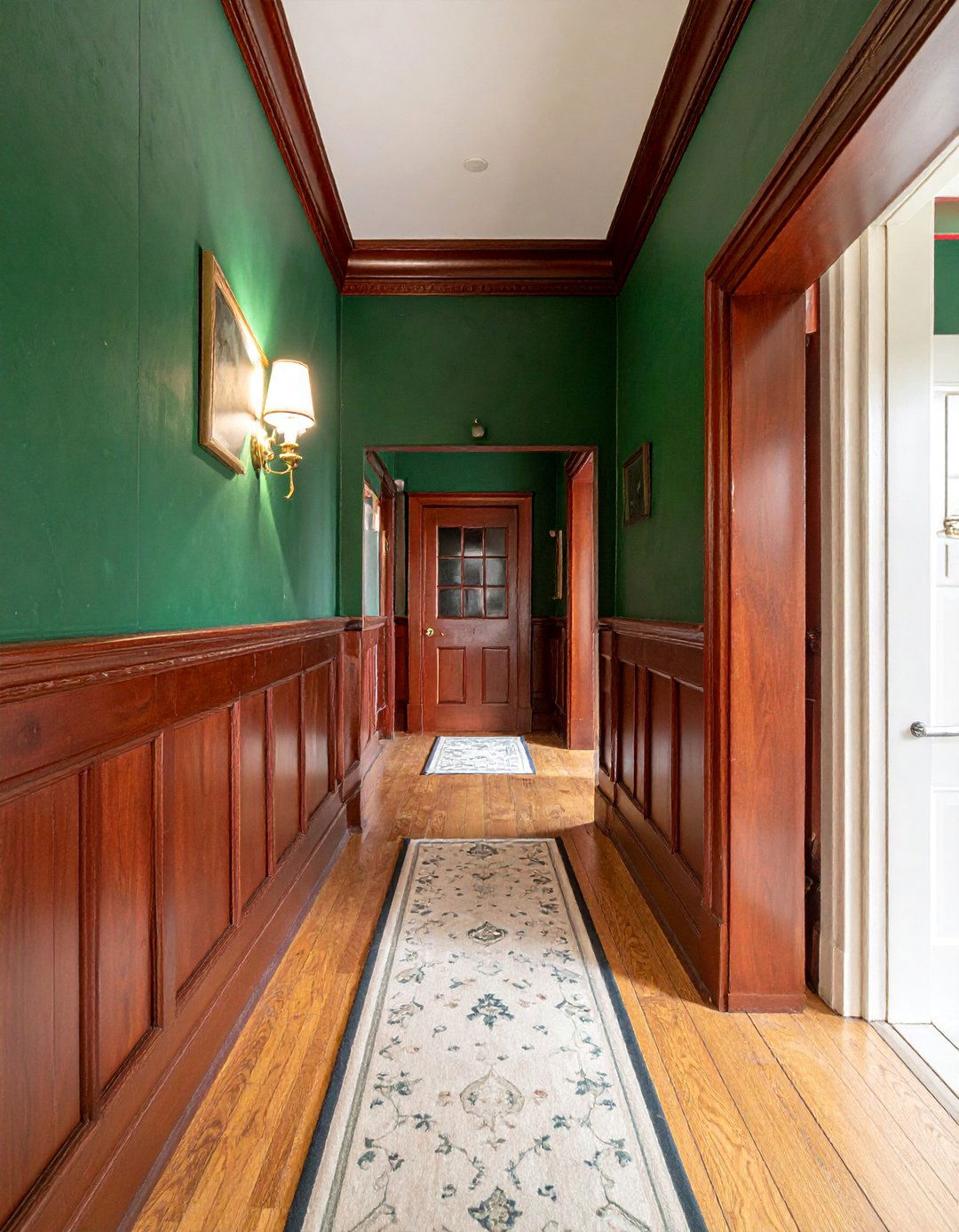
Dark wood paneling, or wainscoting, is a hallmark of Victorian interior architecture, adding a sense of warmth, substance, and formality to a hallway. Typically installed on the lower portion of the walls and capped with a dado rail, this feature protects the walls from scuffs while introducing rich texture. Woods like oak, mahogany, or walnut were favored, often polished to a high sheen to reflect light. Painting the wall above the paneling in a contrasting lighter or equally deep color creates a sophisticated, layered look. This architectural detail grounds the space and provides a perfect backdrop for displaying artwork or mirrors.
8. Victorian Hallway Adorned with William Morris Prints
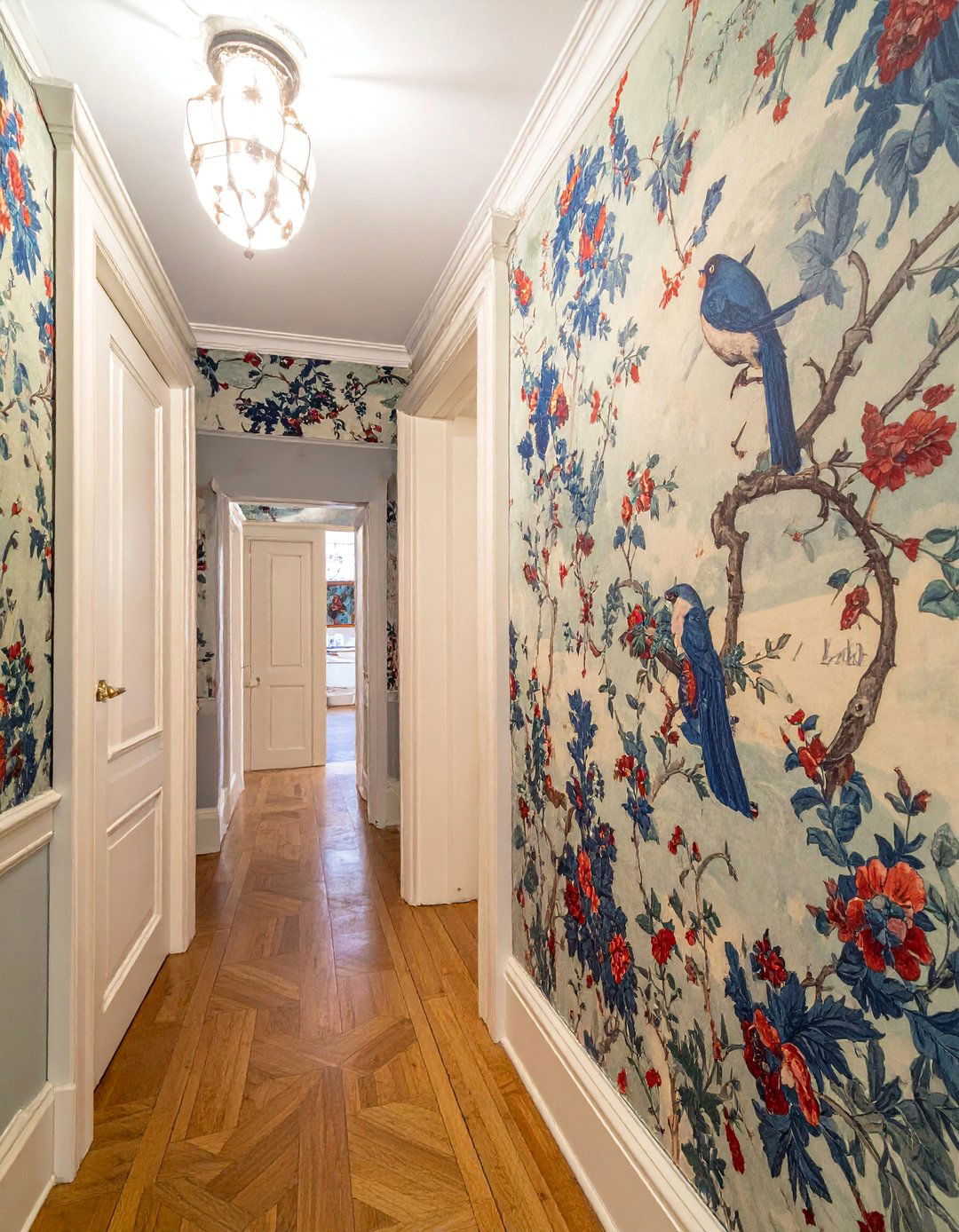
Bringing the beauty of nature indoors, William Morris wallpapers are synonymous with the Arts and Crafts movement that flourished during the late Victorian era. His iconic patterns, such as "Strawberry Thief" or "Pimpernel," feature intricate, flowing designs of birds, flowers, and foliage. Using these prints in a hallway creates a powerful decorative statement that is both historic and timeless. The dense, repeating motifs and rich, organic color palettes add a sense of movement and life to the walls. Whether used on all walls or as a feature above a dado rail, a Morris print infuses the space with artistic heritage.
9. Victorian Hallway with a Carved Wooden Console Table
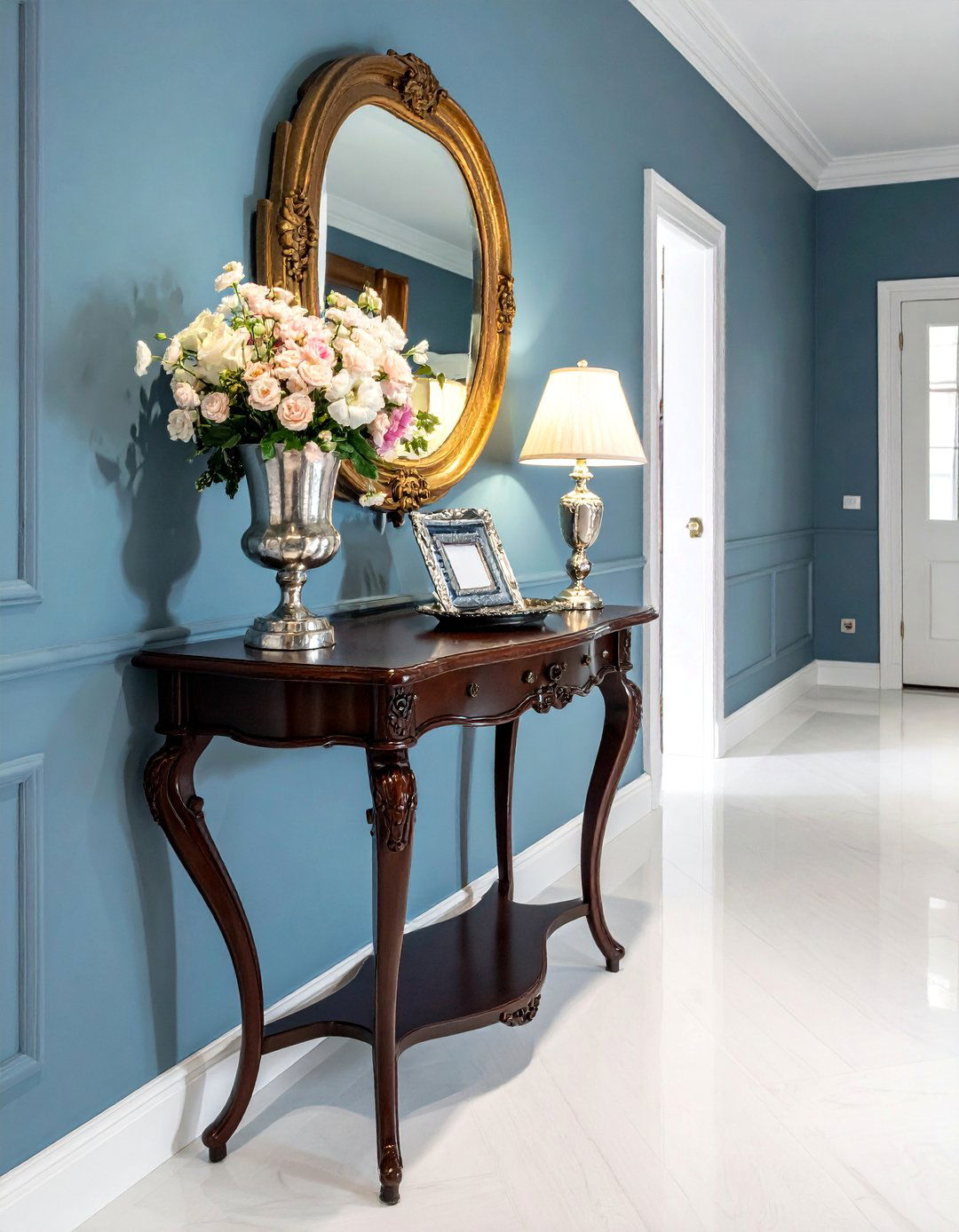
A narrow console table is an essential piece of furniture in a Victorian hallway, providing both style and utility. Typically crafted from dark woods like mahogany or walnut, these tables often feature ornate details such as carved legs, a marble top, and perhaps a small drawer for storing keys or mail. Placed against a wall, often beneath a grand mirror, the console table offers a surface to display a vase of fresh flowers, a pair of elegant lamps, or a traditional calling card tray. It anchors the space and adds a layer of functional elegance, reinforcing the hallway's role as a formal reception area.
10. Victorian Hallway Defined by a Dado Rail
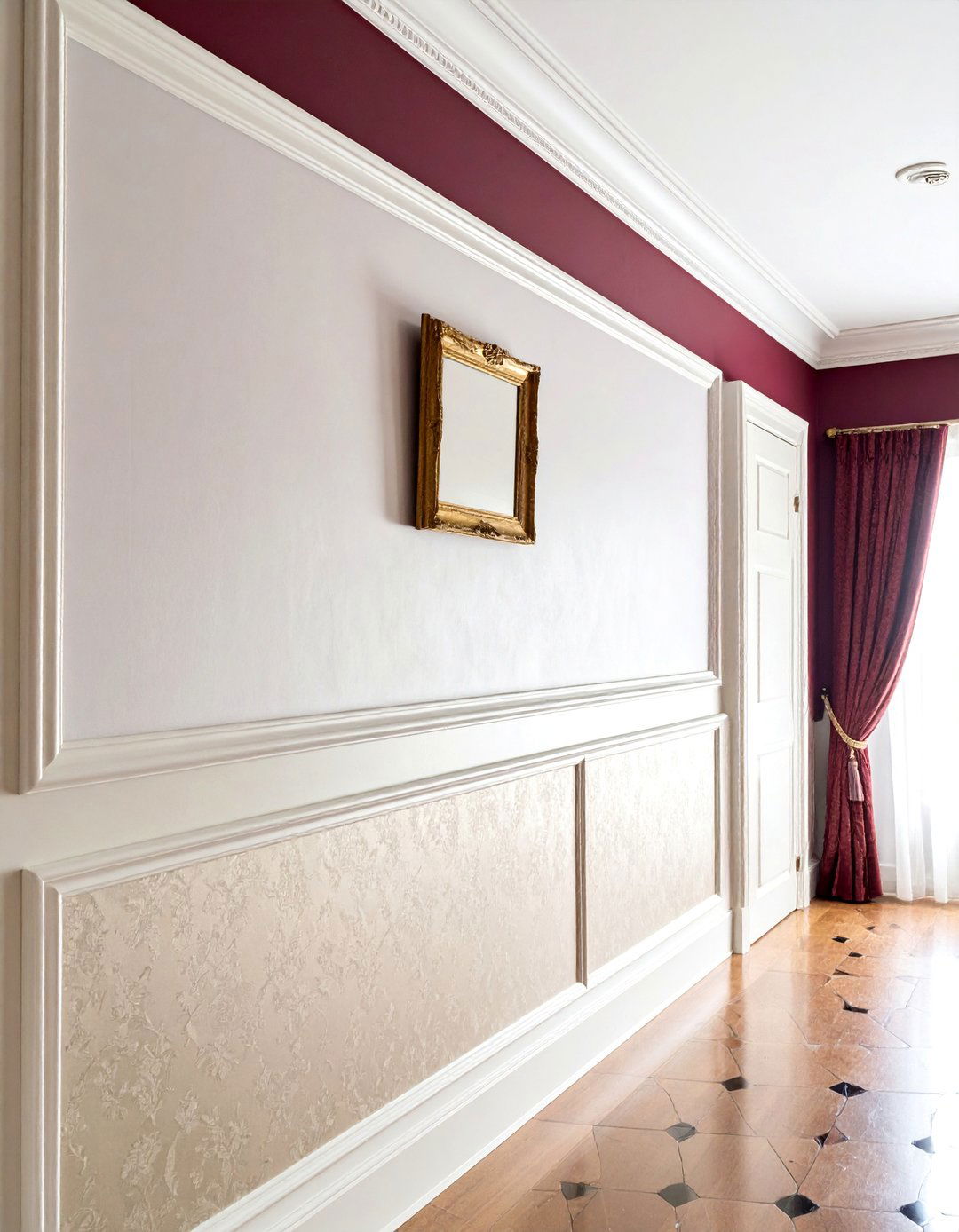
The dado rail is a simple yet highly effective architectural element for creating a classic Victorian look. Historically, its purpose was to protect walls from being damaged by the backs of chairs, but it quickly became a key decorative feature. Positioned about a third of the way up the wall, it visually breaks up the surface, allowing for the use of two different wall treatments. For instance, you could have a durable, textured wallpaper like Anaglypta below the rail and a patterned or richly colored paint above it. This division adds structure and sophistication, defining the proportions of the hallway gracefully.
11. Victorian Hallway Showcasing a Decorative Archway
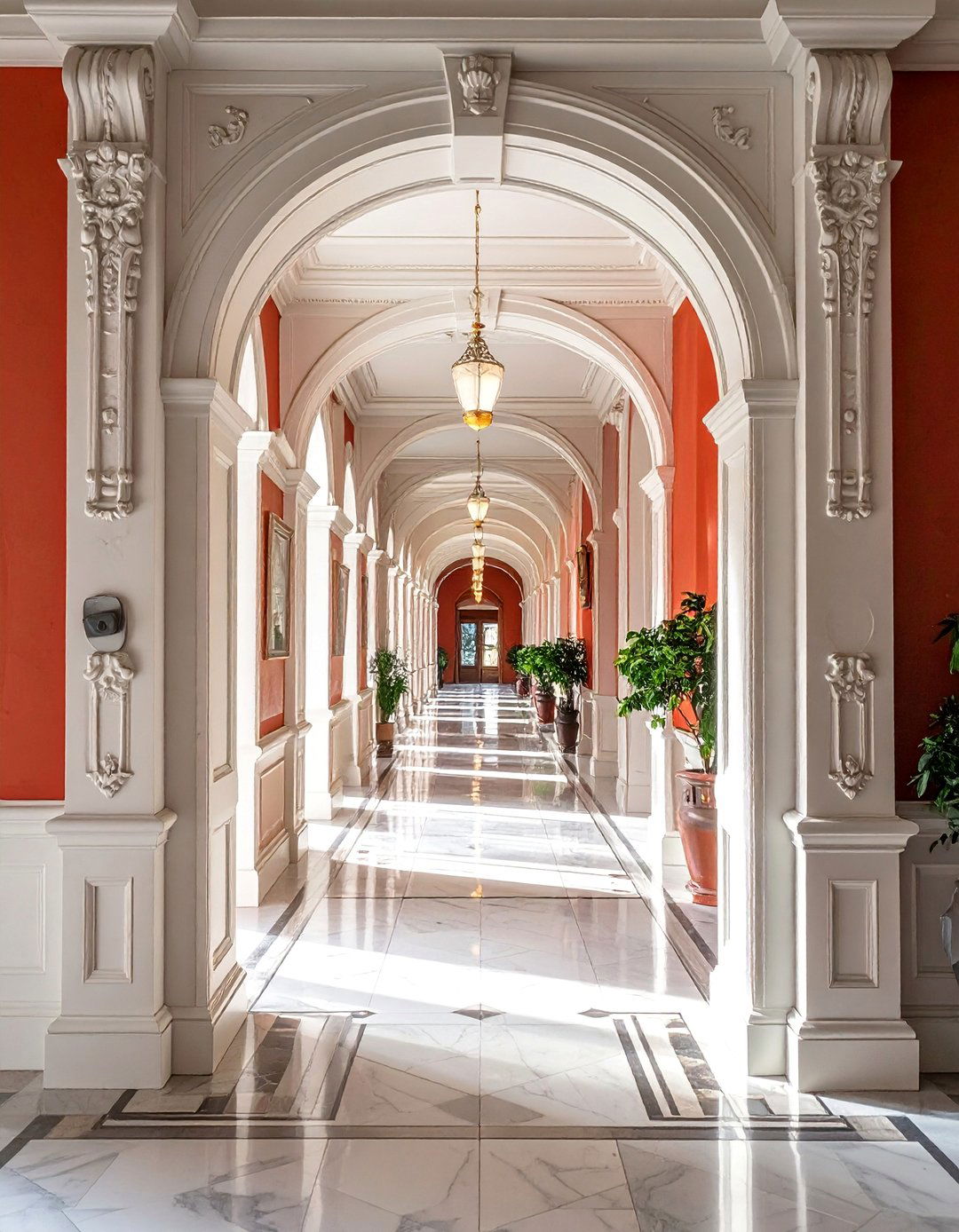
Architectural features like decorative archways are common in Victorian homes, often used to demarcate the transition from the main entrance to the rest of the house. These arches are frequently supported by ornate plaster corbels or columns, adding a sense of classical grandeur and structural elegance. The arch not only creates a beautiful visual frame as you look down the corridor but also enhances the feeling of height and space. Leaving this feature intact and highlighting it with contrasting paint or intricate molding is key to preserving the home's historic character and creating a stunning, well-defined journey through the entryway.
12. Victorian Hallway with Gas-Style Wall Sconces
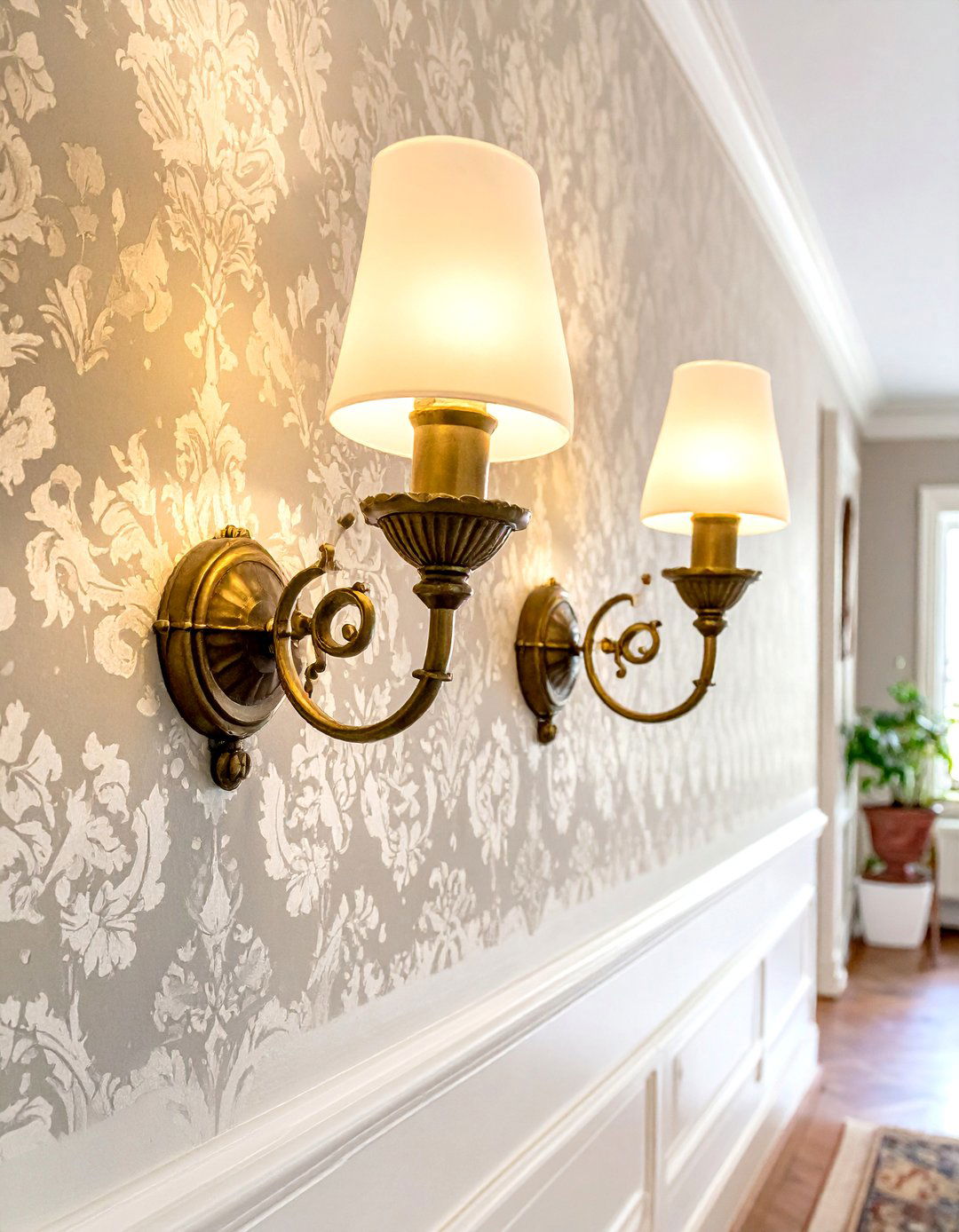
To supplement the light from a central chandelier and add layered ambiance, gas-style wall sconces are an excellent choice for a Victorian hallway. These fixtures, now electric but designed to replicate the look of 19th-century gaslights, provide a warm, inviting glow. Often made from polished brass or dark bronze, they feature details like elegant scrollwork and etched glass shades that diffuse the light softly. Placed in pairs to frame a doorway, mirror, or piece of art, wall sconces add symmetry and functional accent lighting, illuminating the length of the hallway and highlighting its architectural features after dark.
13. Victorian Hallway with a Traditional Hall Stand
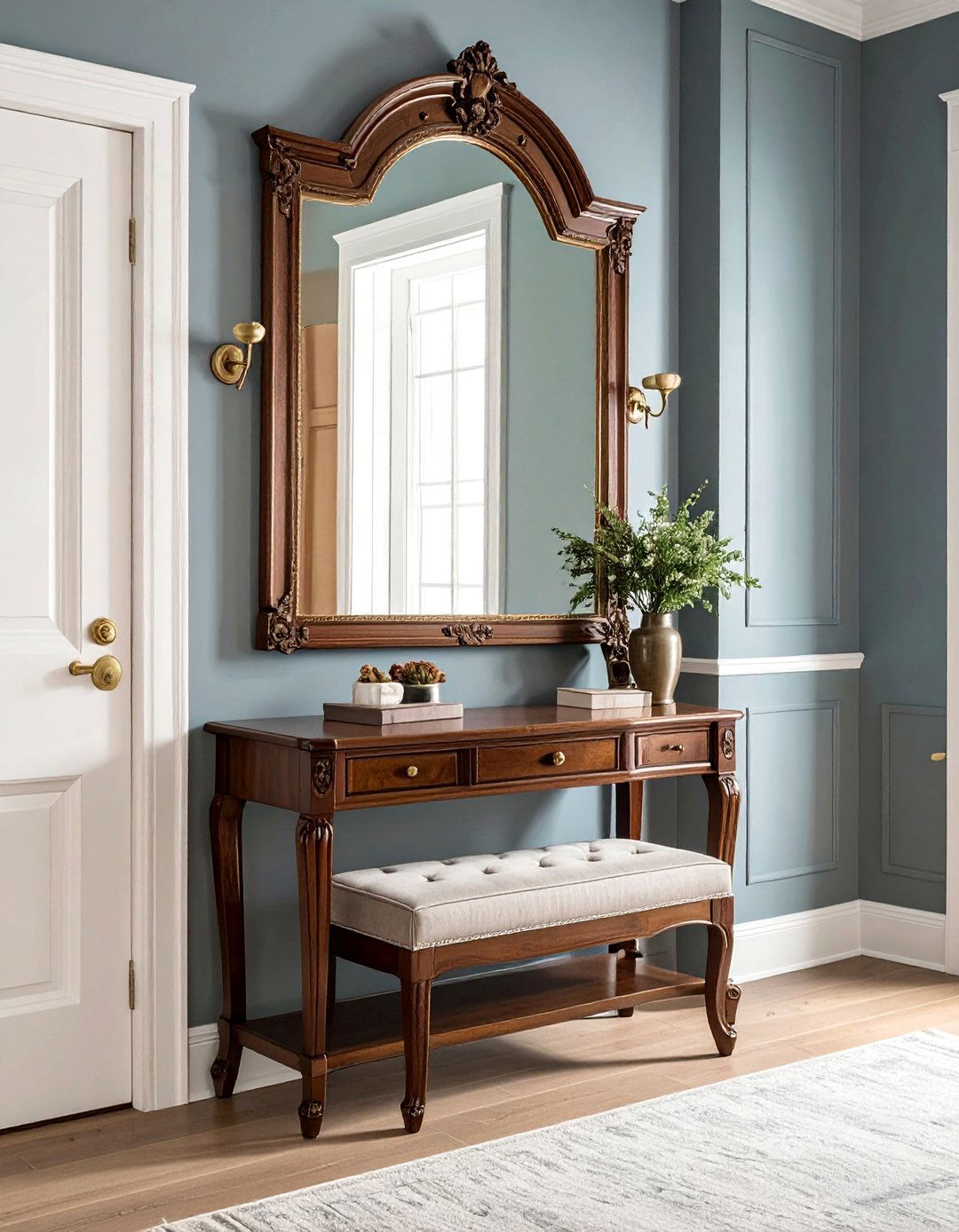
A quintessential piece of Victorian furniture, the hall stand was a practical and stately addition to any entryway. This all-in-one unit typically combined a mirror, hooks for coats and hats, a small bench or storage box for boots, and a holder for umbrellas. Crafted from dark, carved wood like oak, it was designed to be the first and last thing a visitor would use. Placing an antique or replica hall stand in your hallway not only provides convenient storage, helping to keep the space uncluttered, but also serves as an imposing and historically accurate focal point that speaks to the era’s formality.
14. Victorian Hallway Grounded by a Persian Rug
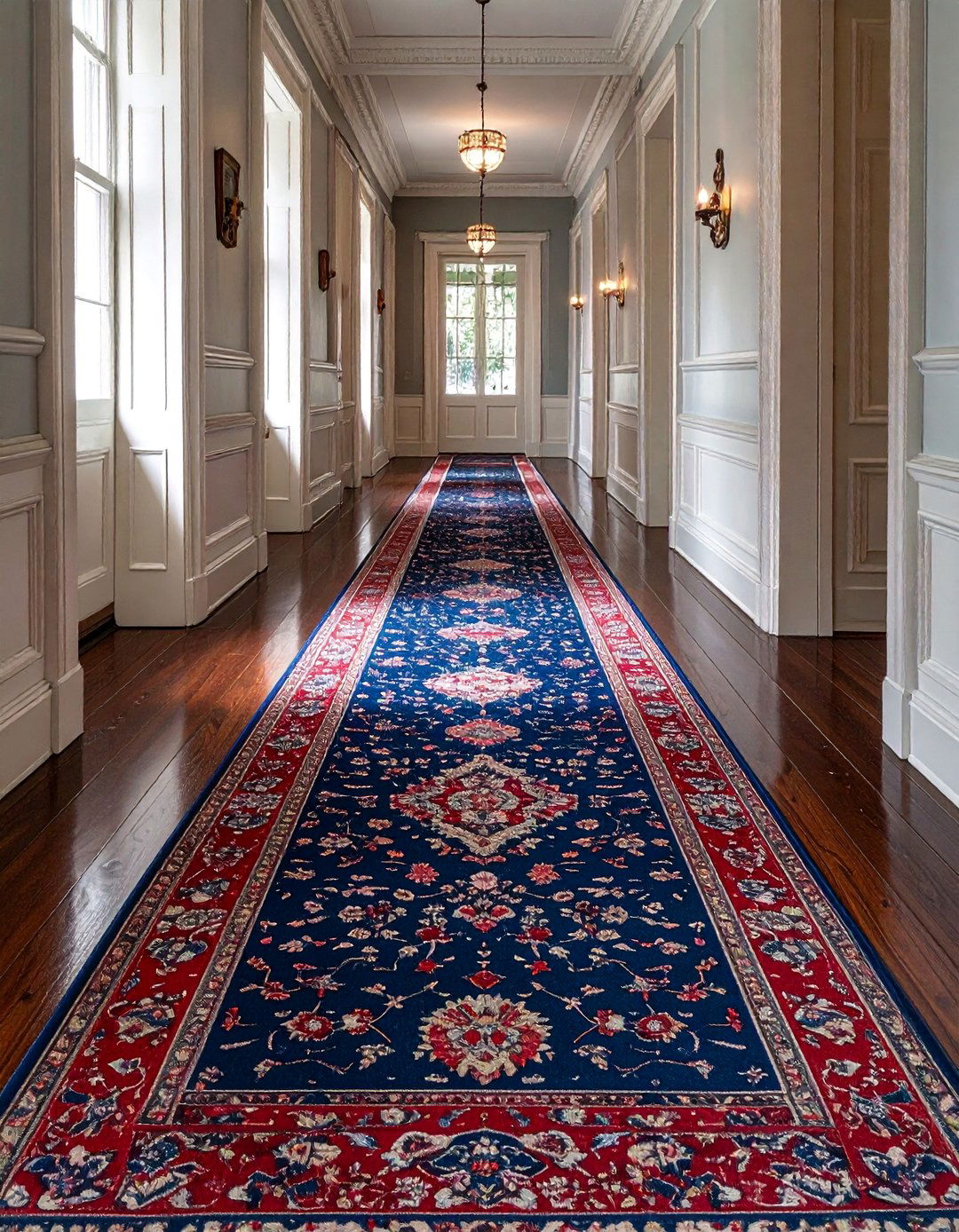
To soften the look of a tiled or wooden floor and add a layer of warmth and color, a long Persian or oriental runner is the perfect solution. These intricate, hand-knotted rugs were highly prized in the Victorian era, signifying wealth and a well-traveled owner. The rich patterns and deep jewel tones of a traditional runner complement the dark wood and ornate details found elsewhere in the hallway. A rug also helps to absorb sound, reducing echoes in a long, narrow space. Its linear form naturally draws the eye forward, guiding guests from the entrance into the heart of the home.
15. Victorian Hallway Using a Deep and Moody Color Palette
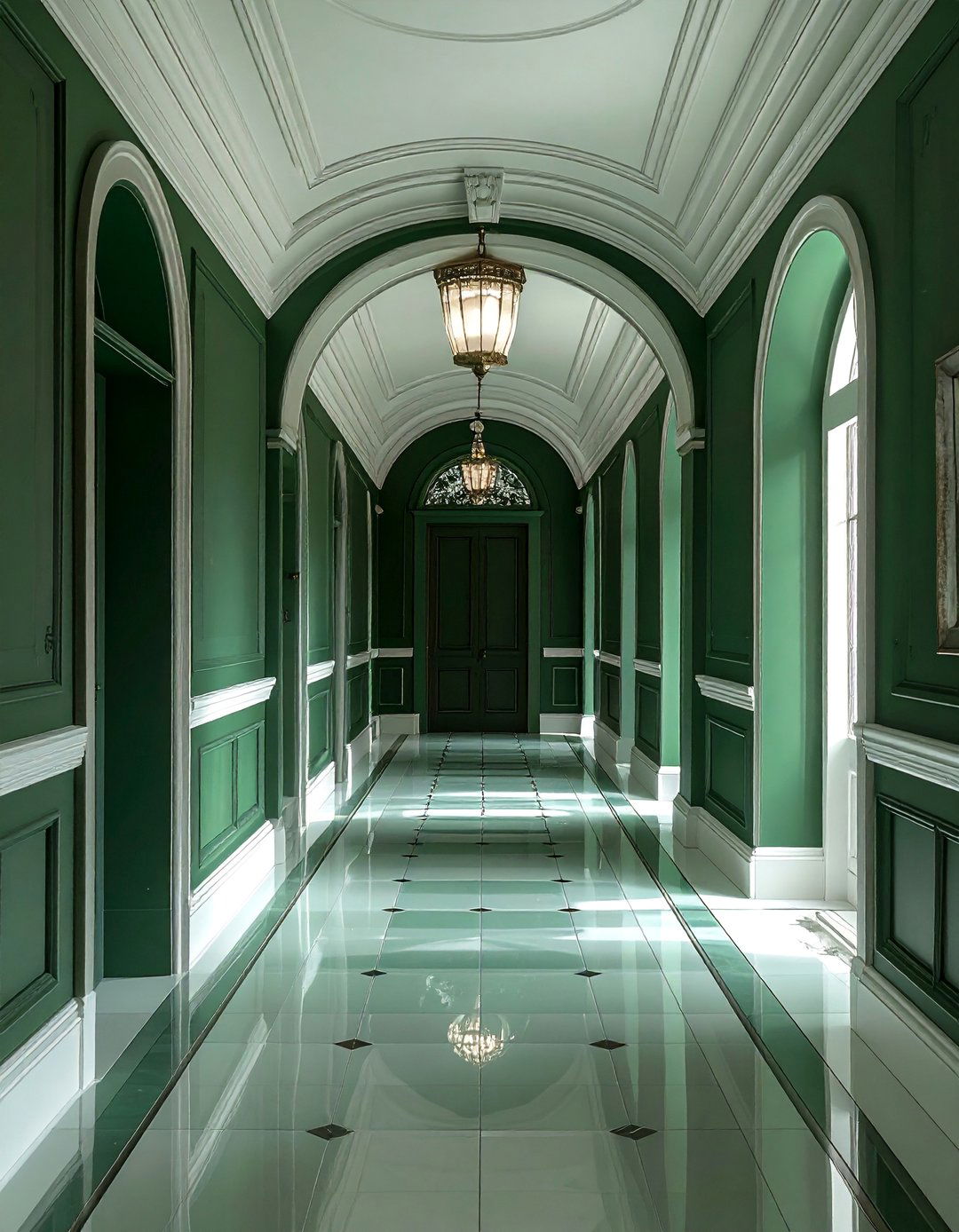
Victorians were not afraid of color, often favoring deep, rich hues that created a sense of drama and intimacy. In a hallway, colors like burgundy, forest green, deep navy, or even a dramatic black can create a sophisticated and cocooning effect. These dark tones make architectural details, such as white-painted cornices, skirting boards, and archways, stand out in sharp relief. While it may seem counterintuitive for a narrow space, a moody palette adds a layer of opulence and historical authenticity. When balanced with good lighting from chandeliers and mirrors, the result is a welcoming and impressively grand entrance.
16. Victorian Hallway with an Elaborate Ceiling Rose
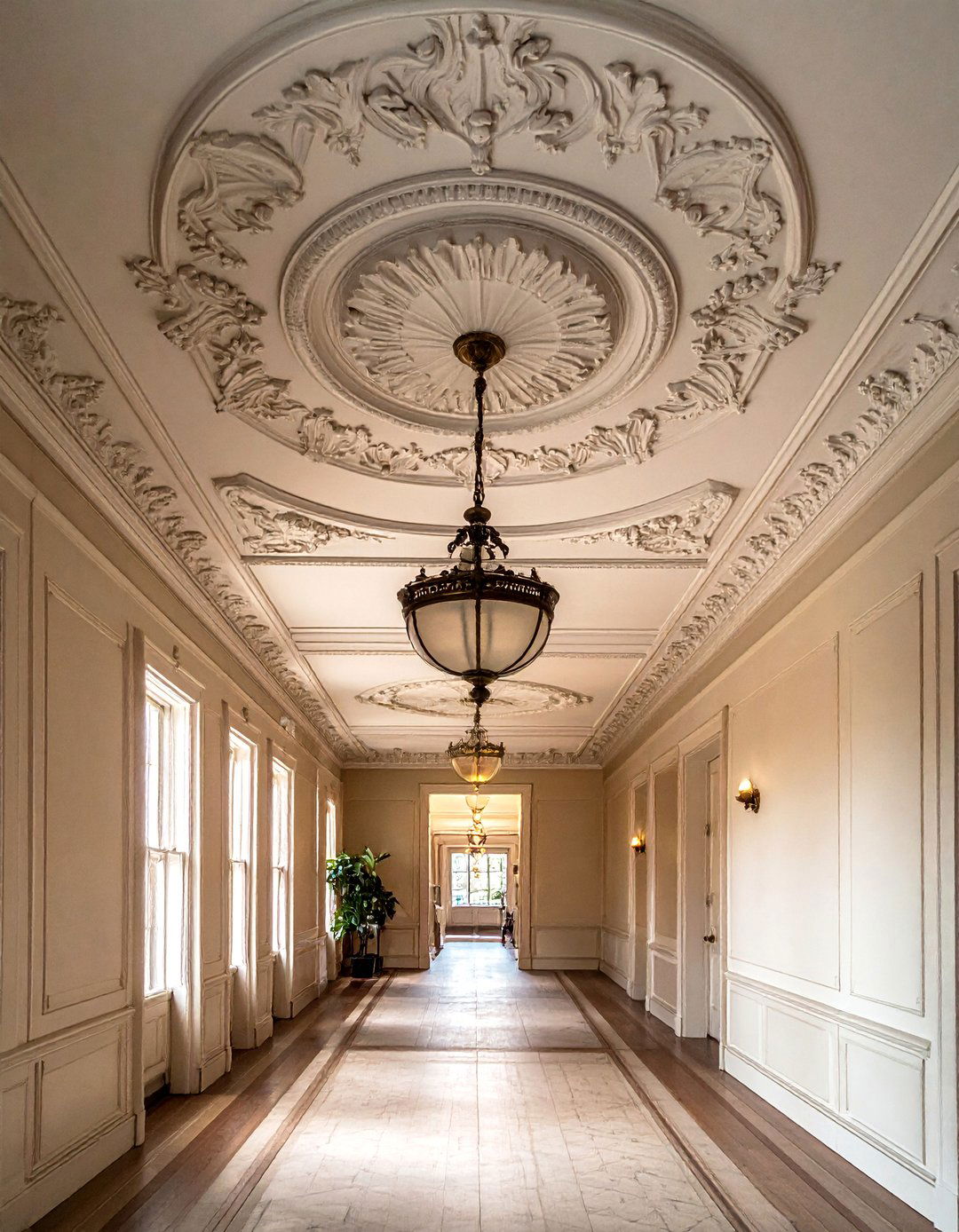
In Victorian interior design, even the ceiling was an opportunity for decoration. An elaborate plaster ceiling rose is a must-have detail that serves as the decorative anchor for a central light fixture, such as a chandelier. These medallions range in design from relatively simple concentric circles to highly ornate floral or acanthus leaf patterns. A beautifully crafted ceiling rose draws the eye upward, adding a sense of height and grandeur to the hallway. It frames the light fixture perfectly and completes the architectural envelope of the room, showcasing the Victorian commitment to detailed ornamentation on every surface.
17. Victorian Hallway Displaying Framed Botanical Prints
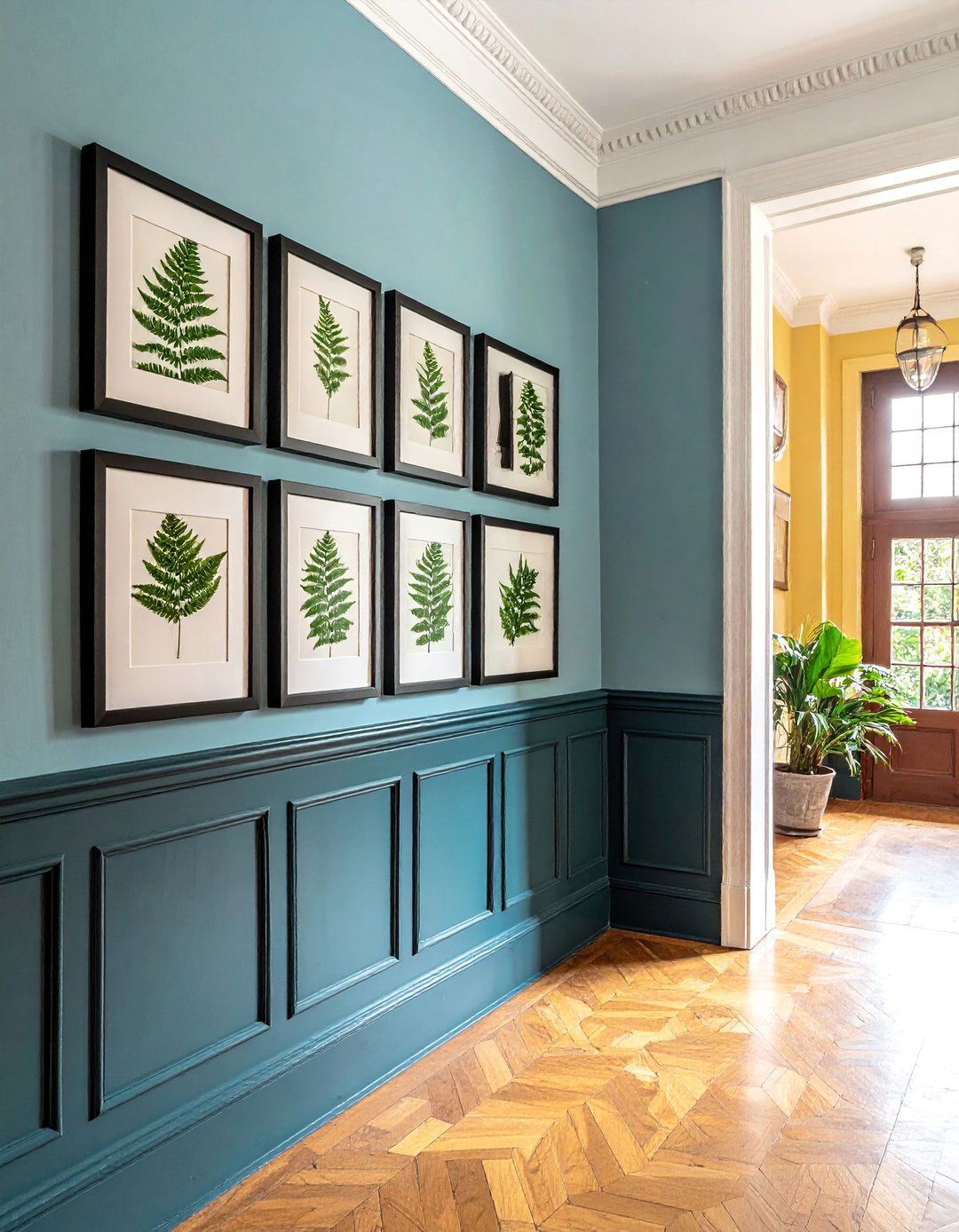
Art was an integral part of Victorian decor, and a collection of framed prints is an excellent way to personalize a hallway. Botanical illustrations, Audubon-style bird prints, or architectural drawings were popular subjects. Grouping a series of these prints together in a symmetrical gallery wall arrangement adds character and intellectual curiosity to the space. Choose matching dark wood or simple gilt frames to maintain a cohesive look. This display not only fills empty wall space but also reflects the Victorian fascination with science, nature, and the wider world, adding a layer of scholarly elegance to the entryway.
18. Victorian Hallway with Velvet Upholstered Seating
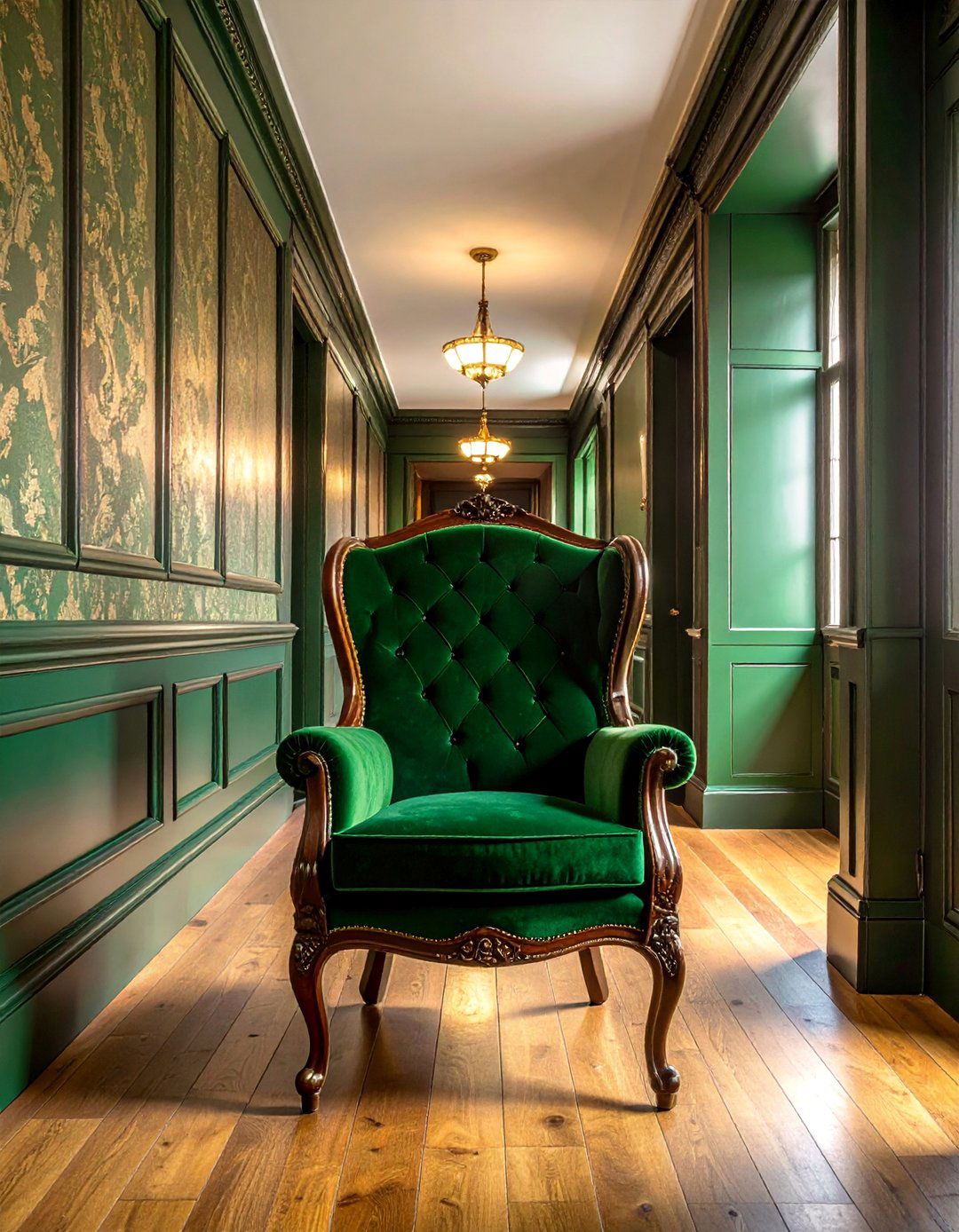
While a hallway is a transitional space, the Victorians often included a small seating area for comfort and formality. A single, high-backed chair or a small bench upholstered in a luxurious fabric like velvet adds a touch of softness and color. Choose a piece with carved wooden legs and a button-tufted back for an authentic period feel. Deep jewel tones such as emerald green, sapphire blue, or ruby red for the velvet will complement the dark woods and rich color schemes of the era. This touch of plush seating provides a practical spot to put on shoes while enhancing the hallway’s welcoming and opulent atmosphere.
19. Victorian Hallway Featuring an Antique Umbrella Stand
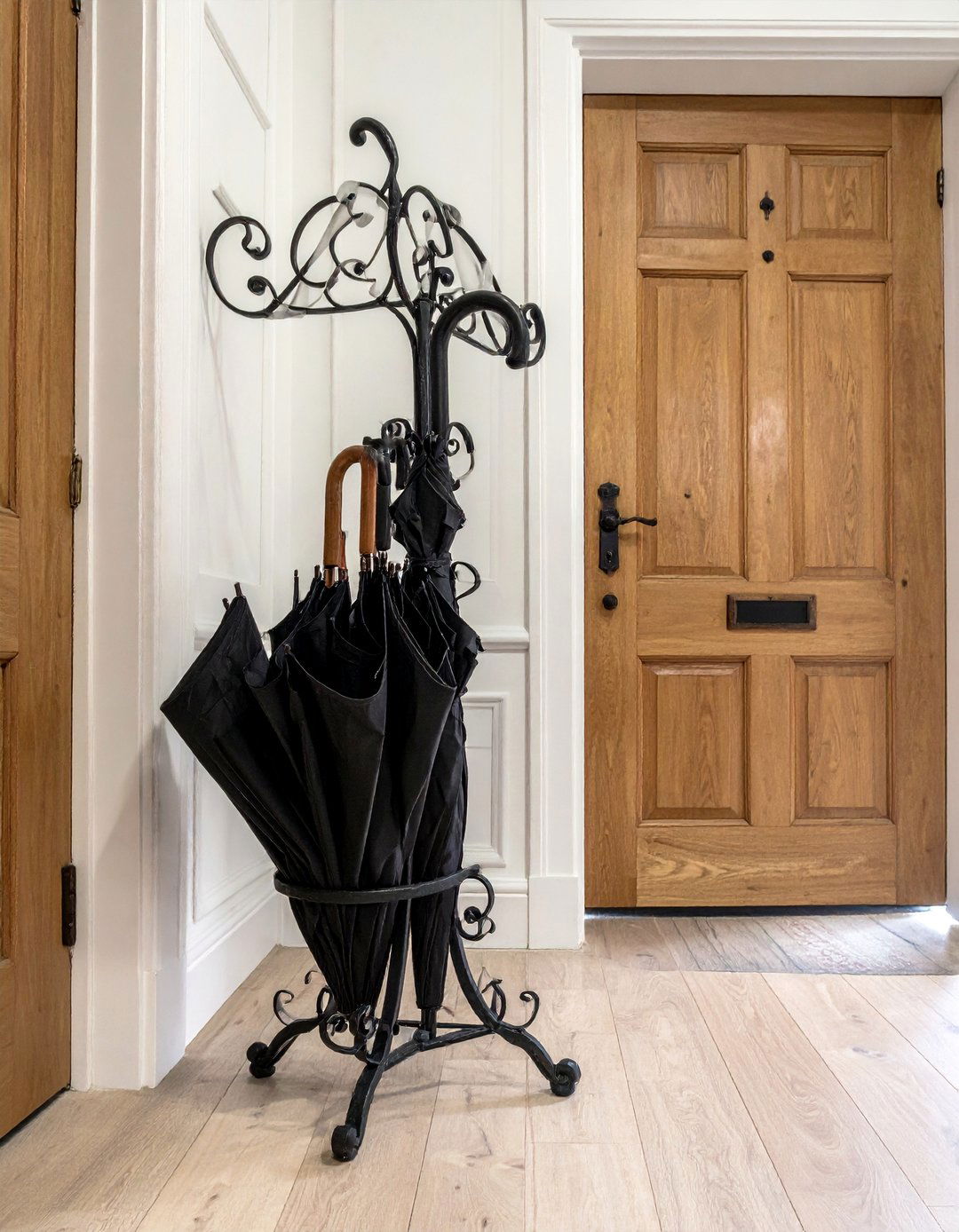
Functionality met fine craftsmanship in many Victorian household items, and the umbrella stand is a prime example. Positioned near the front door, this was an essential accessory for a rainy climate. Often made of cast iron, brass, or decorative ceramic, these stands featured intricate designs, from simple and elegant to whimsical and ornate. An antique umbrella stand is a small but significant detail that adds a layer of authenticity and practical charm to your hallway. It helps keep wet umbrellas contained and floors dry while serving as a unique sculptural element that harks back to the daily life of the 19th century.
20. Victorian Hallway Enhanced with Plaster Corbels
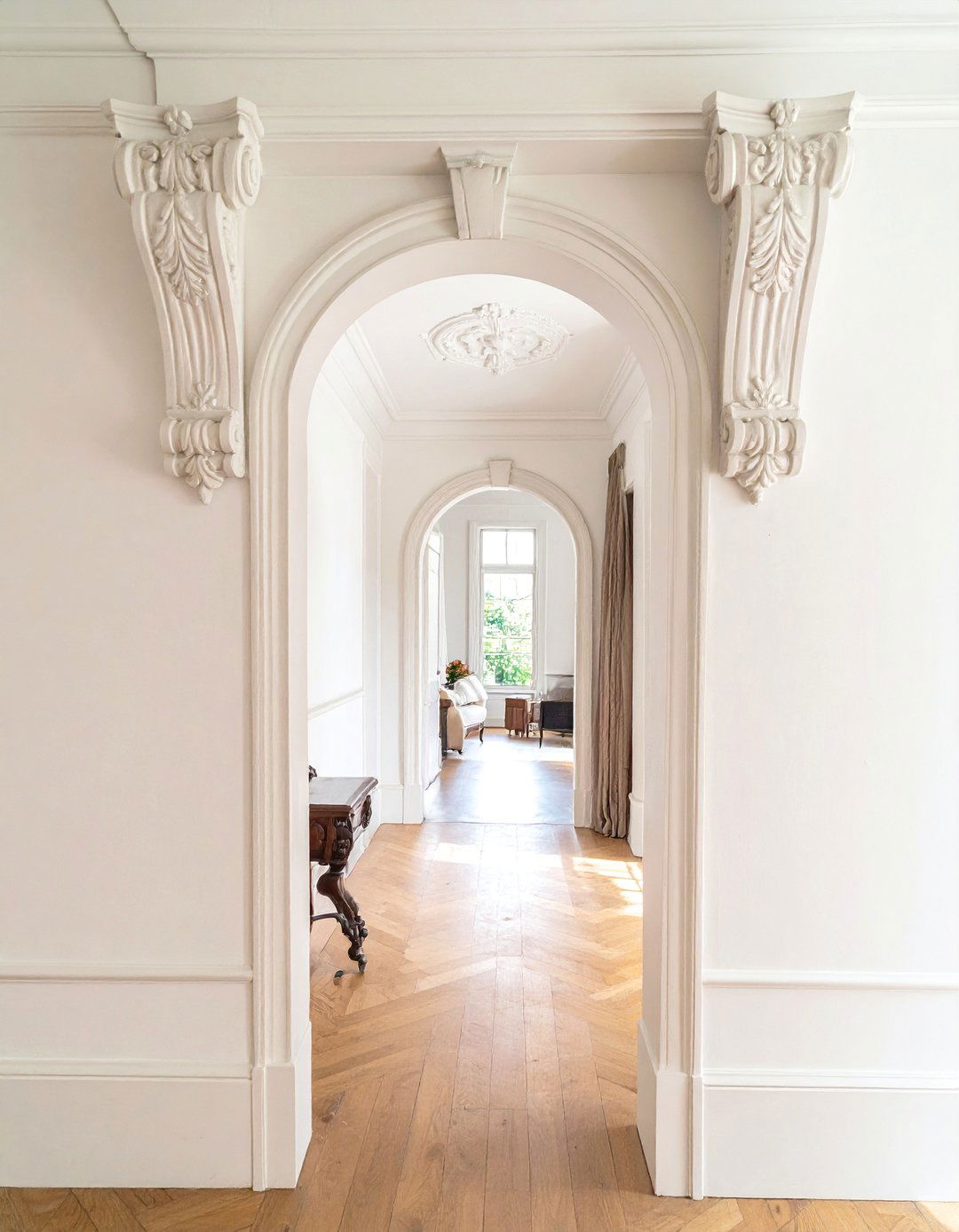
Plaster corbels are decorative brackets that add architectural interest and a sense of structural grandeur. In a Victorian hallway, they are most often found supporting a ceiling archway or at the junction where a wall meets the ceiling, beneath a beam. These ornate, scrolled supports draw inspiration from classical architecture and add a three-dimensional quality to the decor. Highlighting them in a color that contrasts slightly with the walls can make them stand out even more. Corbels are a sophisticated detail that reinforces the period aesthetic, contributing to the overall impression of a solid, well-constructed, and elegantly designed home.
Conclusion:
Recreating the timeless elegance of a Victorian hallway involves a careful layering of architectural details, rich materials, and ornate decoration. From the foundational statement of geometric tiles to the crowning glory of a crystal chandelier, each element plays a crucial role. By focusing on key features like grand staircases, embossed wallpapers, and a deep color palette, you can craft an entryway that is both historically authentic and deeply personal. The result is more than just a passageway; it's a grand introduction that exudes warmth, sophistication, and an enduring sense of style that honors the past.

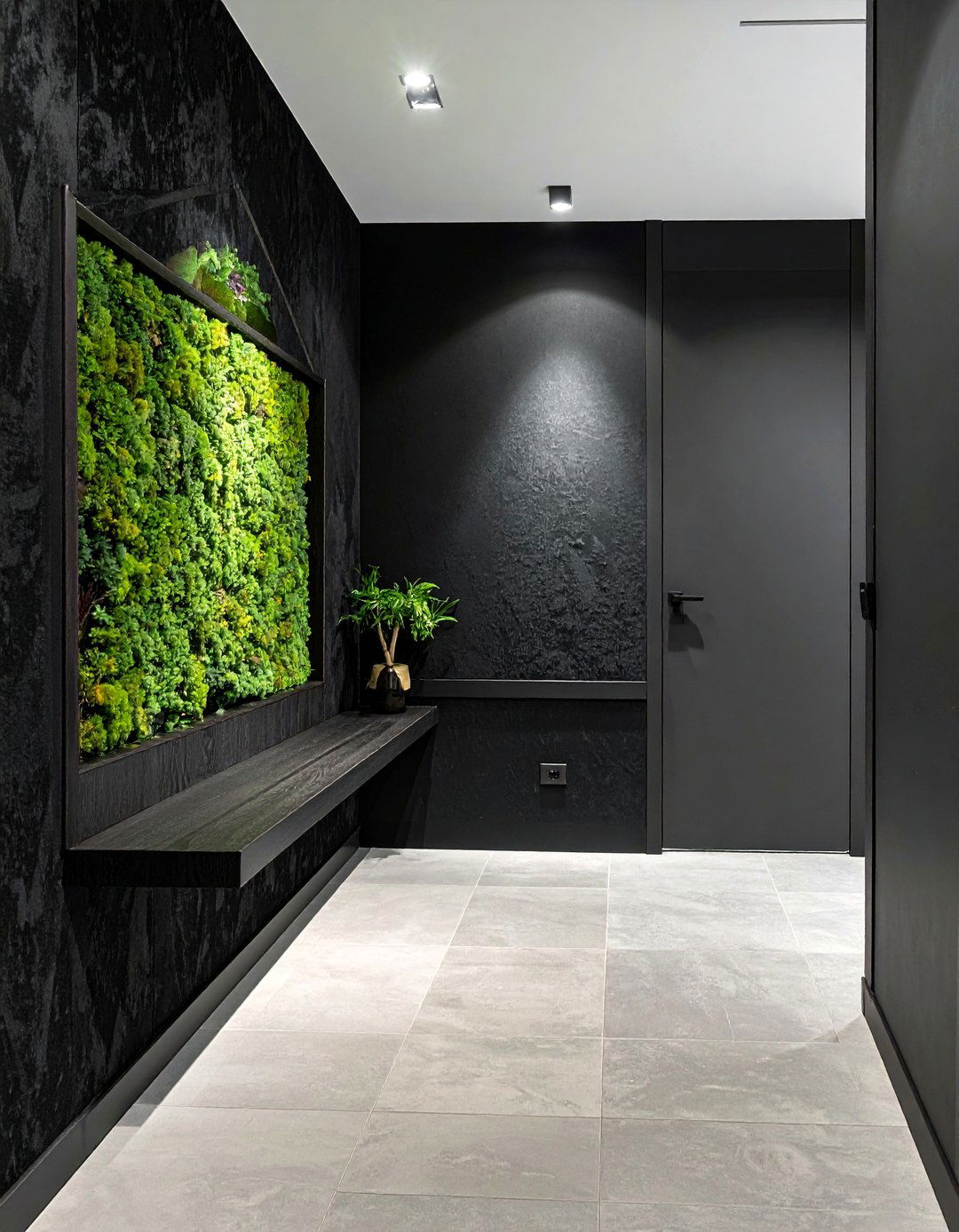
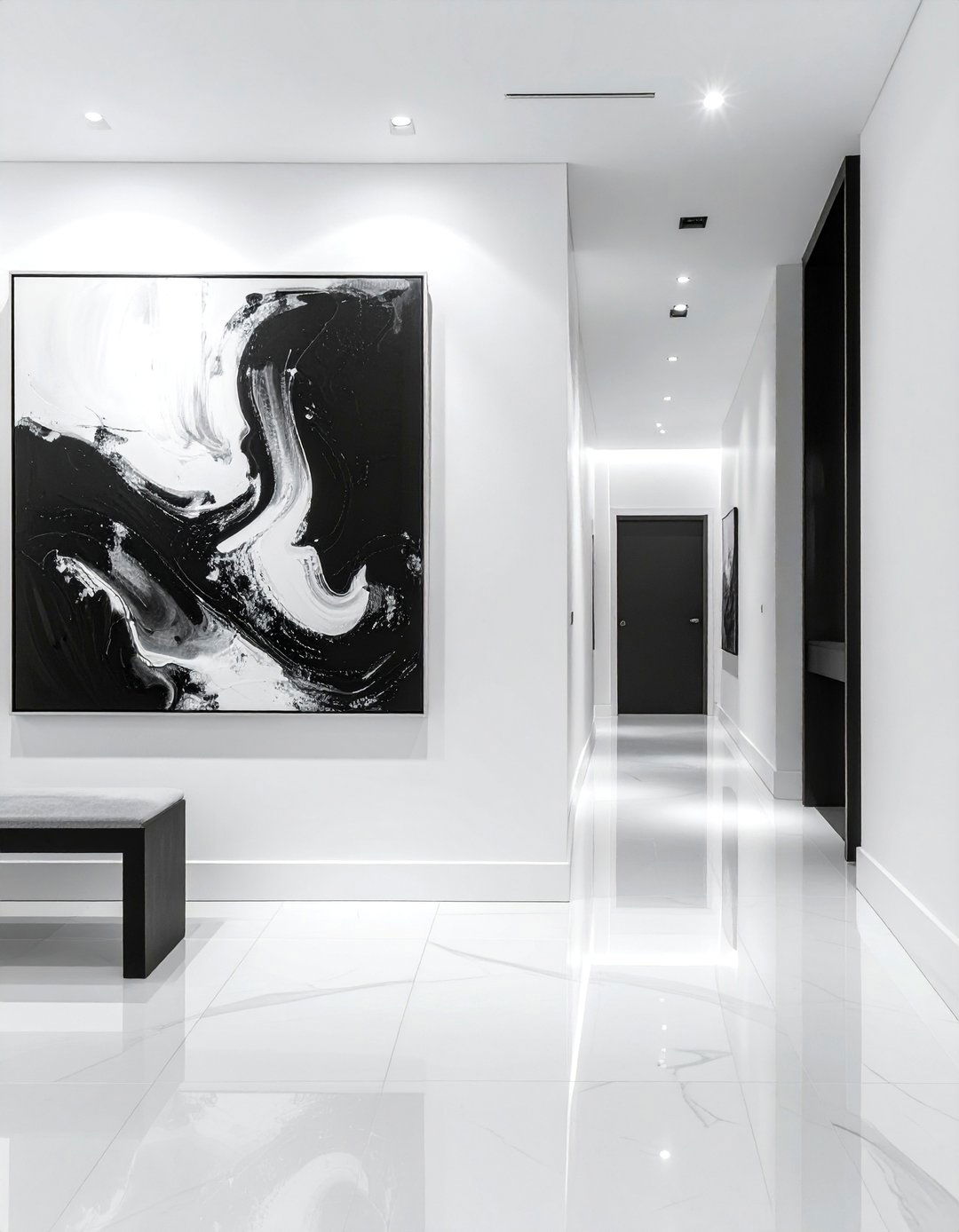
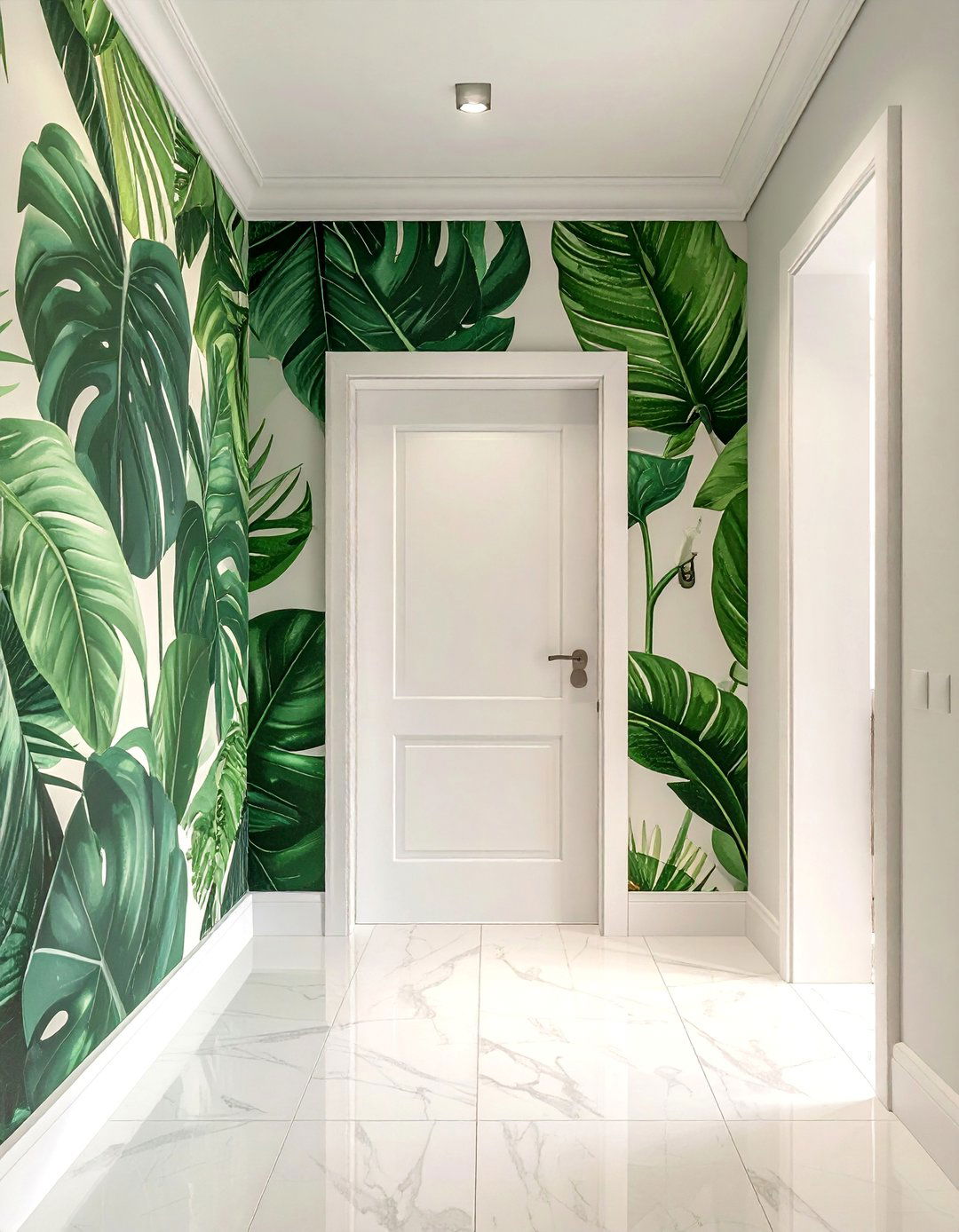
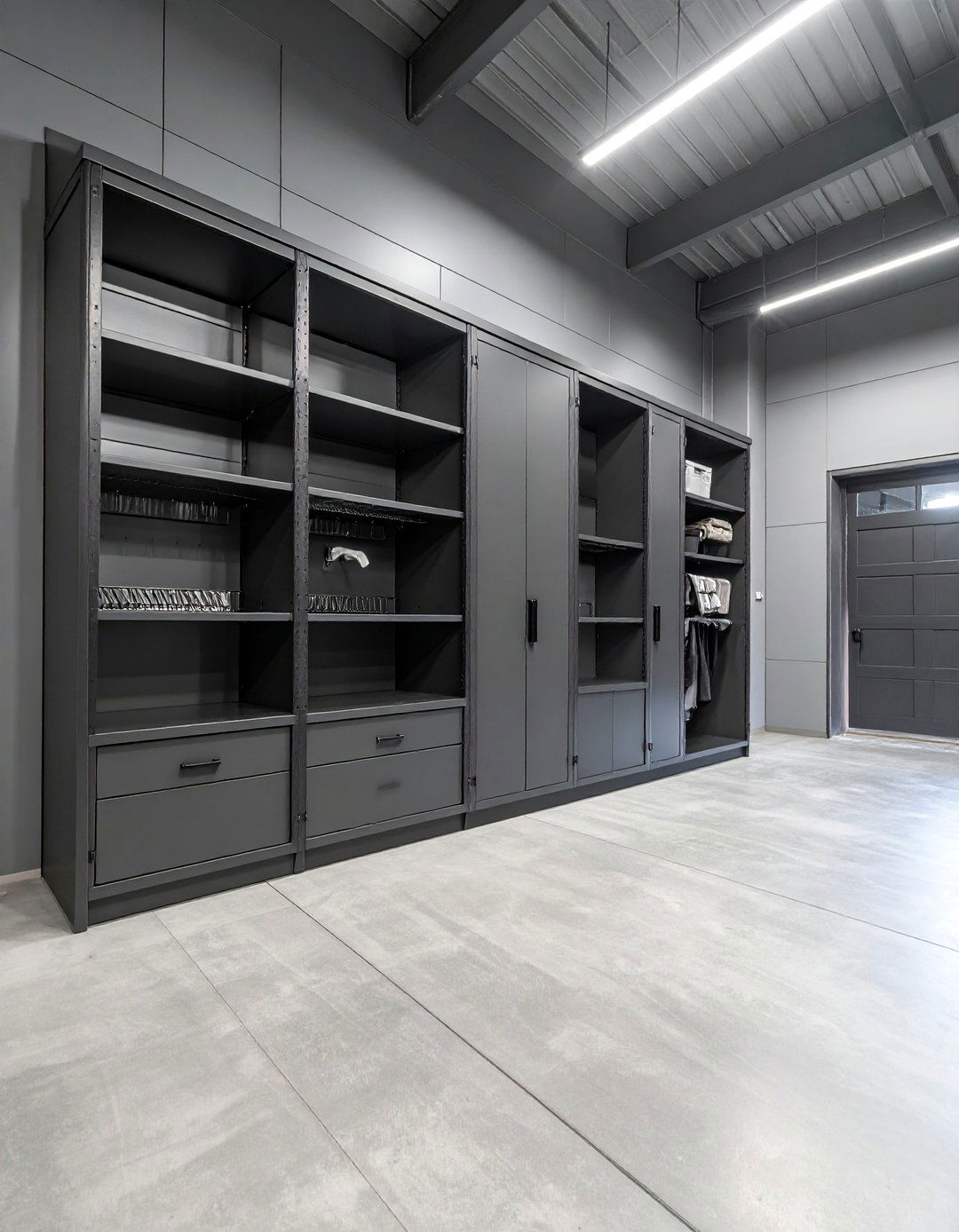
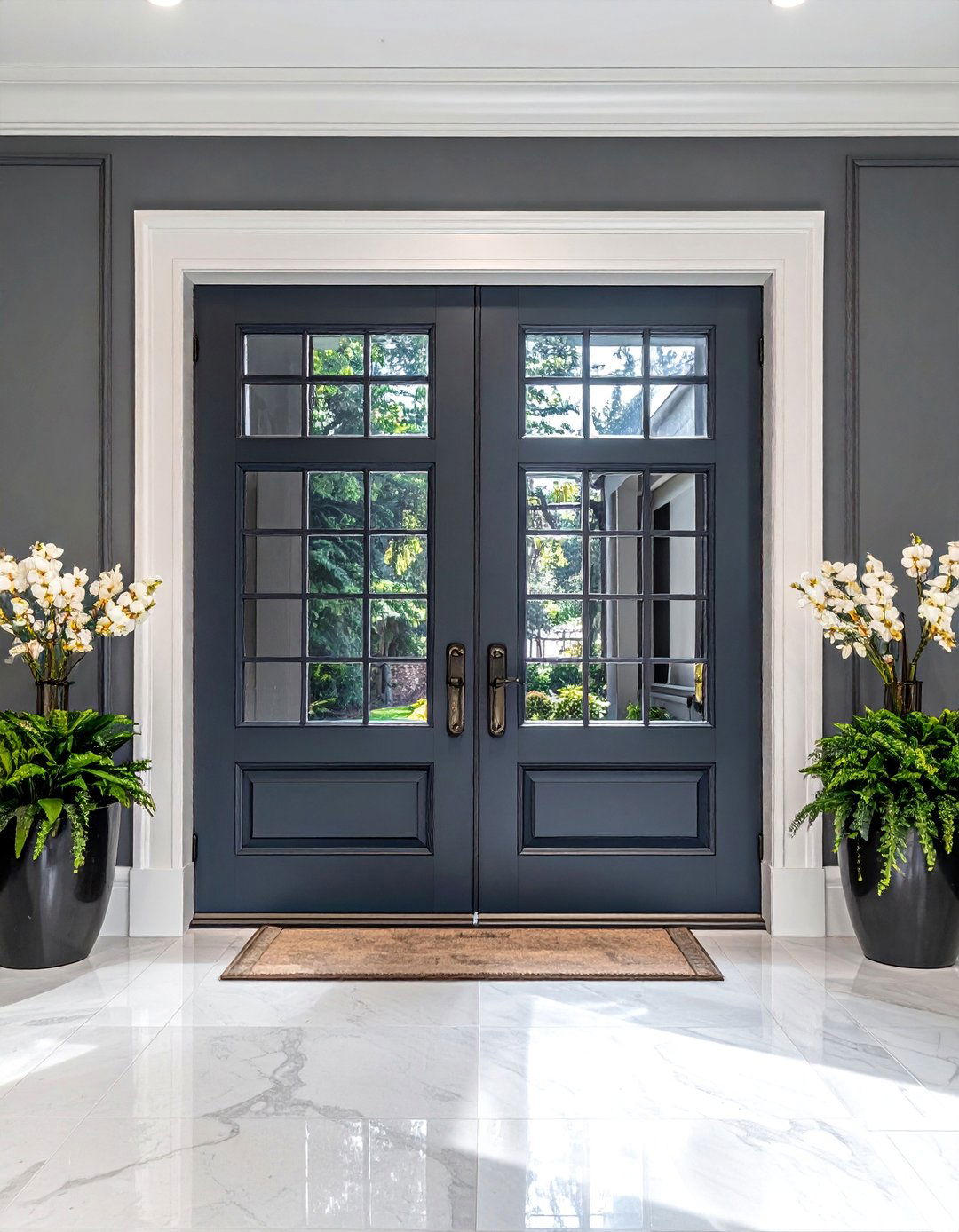
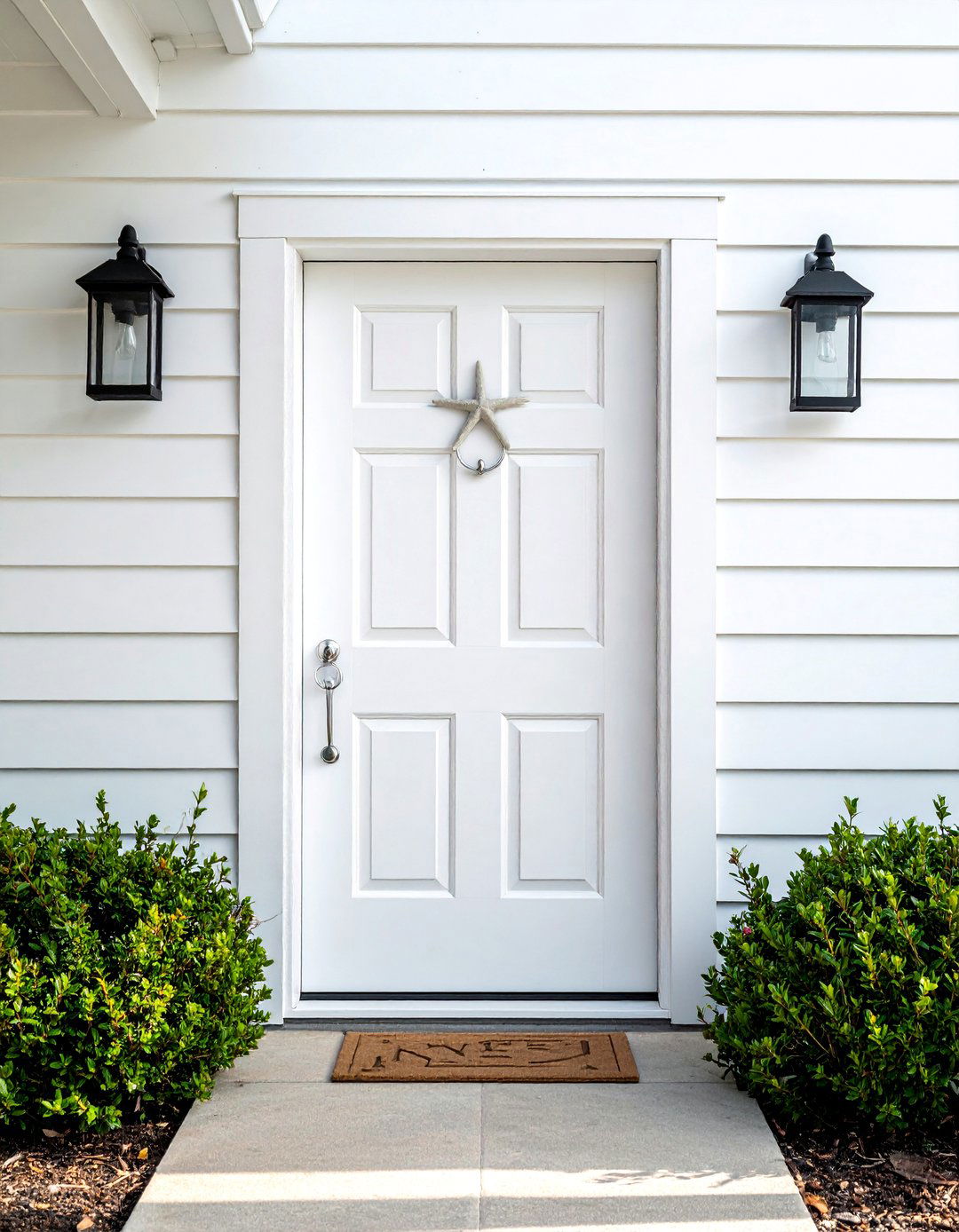
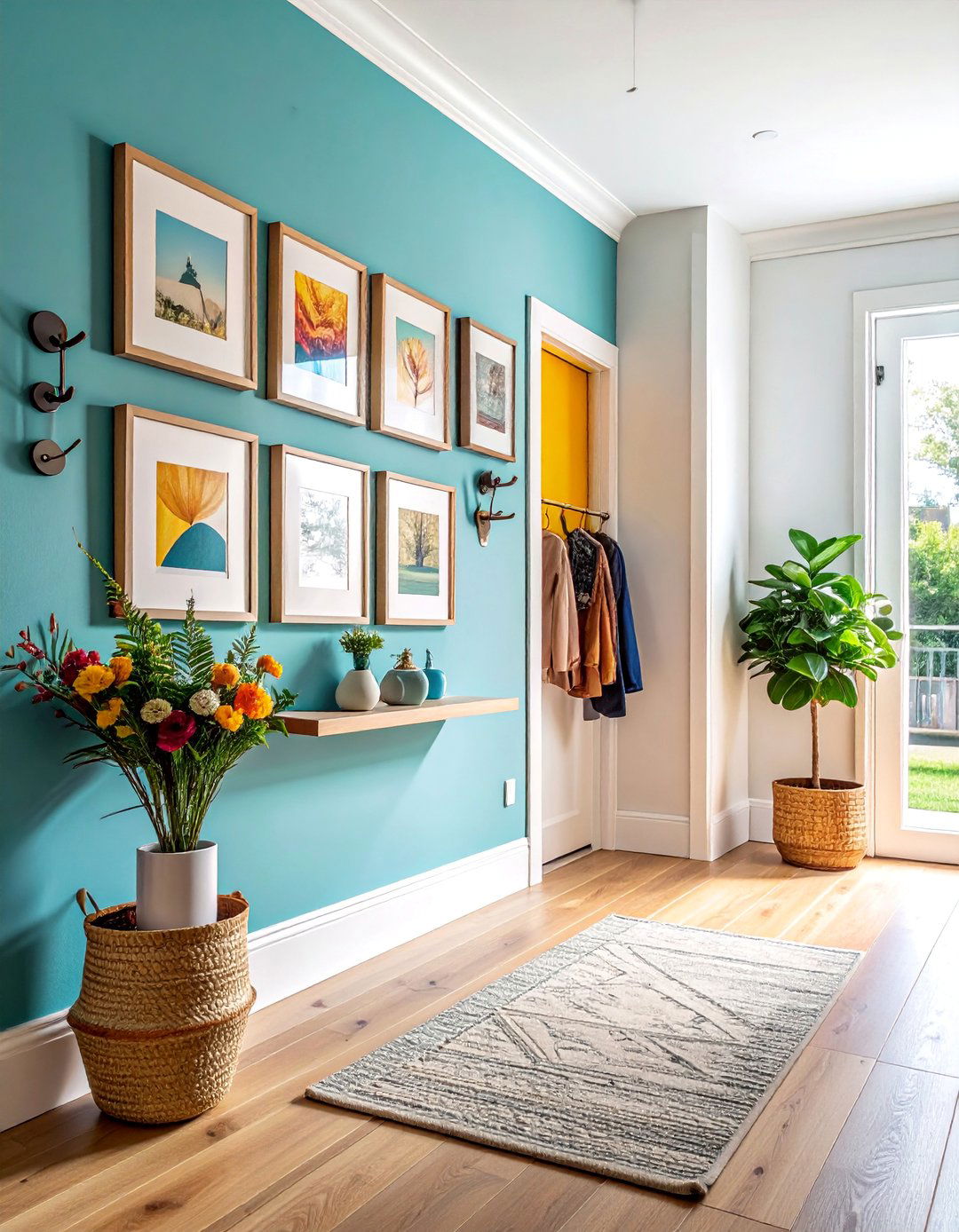
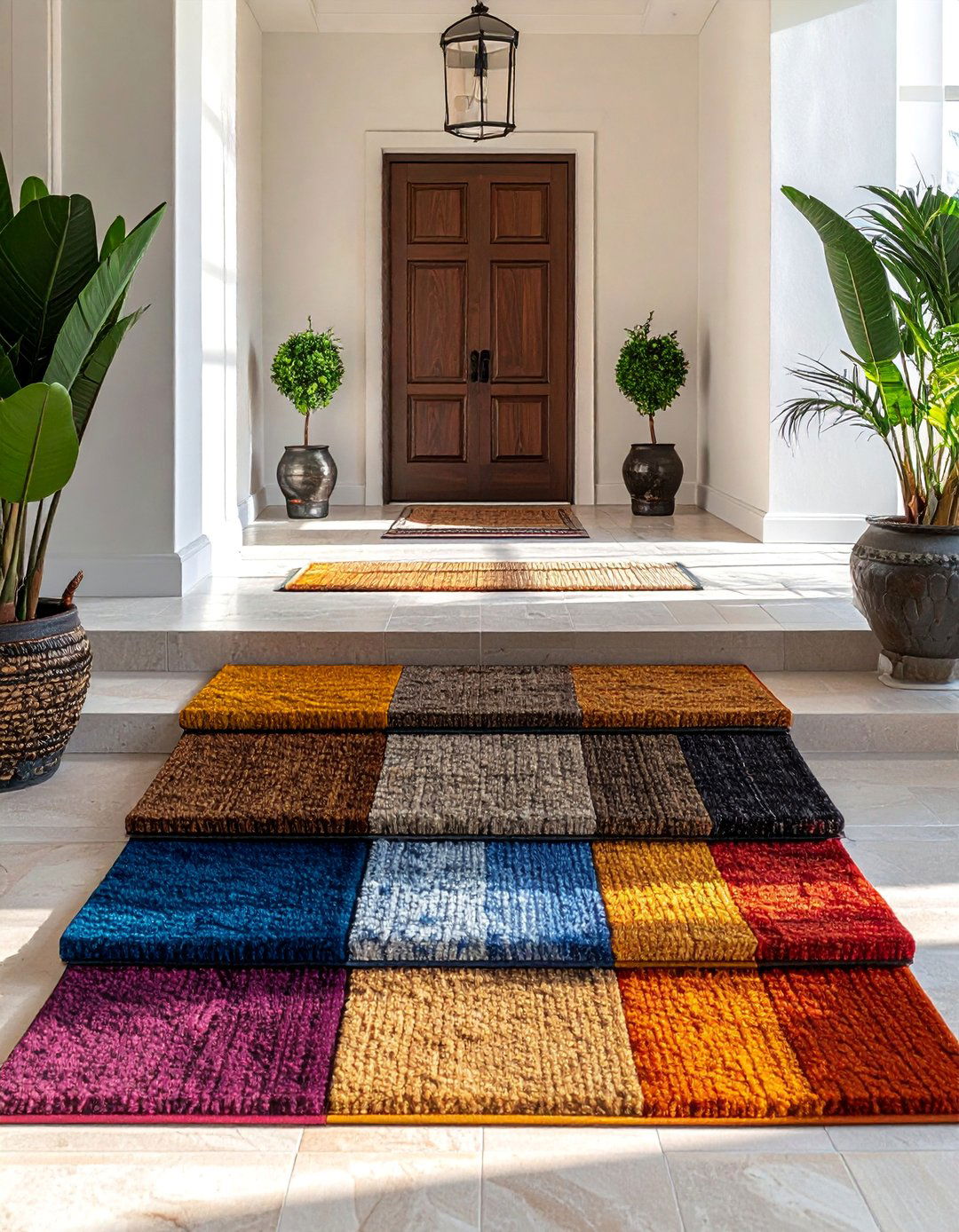
Leave a Reply